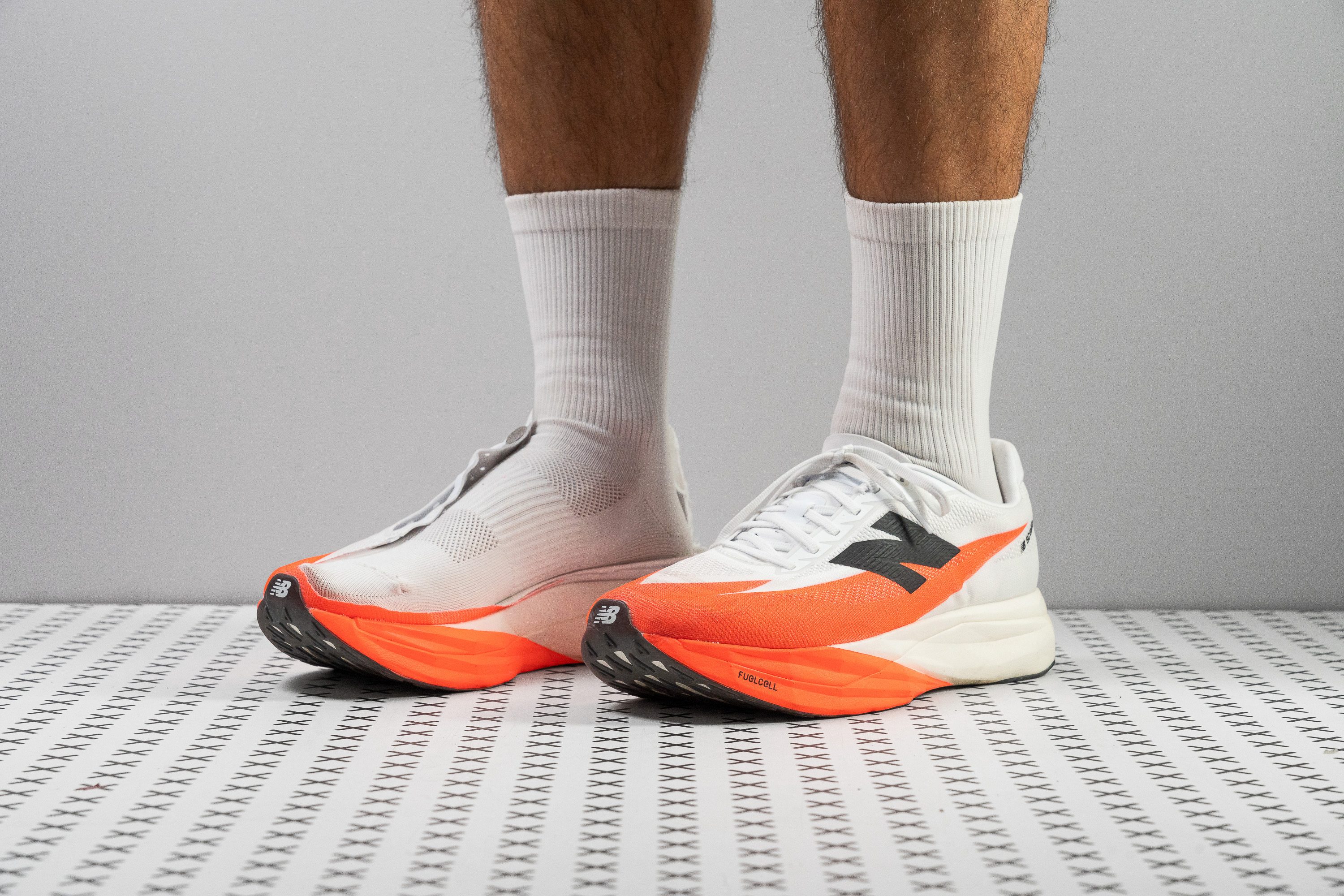Nuestra conclusión
Pros
- Rendimiento y velocidad mejorados
- Parte delantera espaciosa (para ser un modelo de competición)
- Suela altísima en el talón
- Mucho más ligeras que antes
- Buen agarre gracias al nuevo diseño de la suela
- Placa con una curvatura rediseñada para que las transiciones sean más rápidas
- Upper premium y transpirable
- Corrigen los problemas del talón y de la lengüeta de la versión 4
Contras
- Siguen sin ser de las superzapatillas más rápidas
- El talón estrecho las hace menos estables
- Drop alto que puede no gustarle a todo el mundo
- Los cordones no se agarran muy bien
Veredicto de los usuarios
- Top 5% entre Zapatillas de running para asfalto
- Top 4% entre zapatillas de running neutras
- Top 10% más vendidas zapatillas de running
Comparativa
Las zapatillas de running más parecidas
+ + Añadir unas zapatillas | |||||
|---|---|---|---|---|---|
| Puntuación global | 92 Excelentes | 90 Excelentes | 89 Notables | 89 Notables | |
| Precio | 280 € | 230 € | 275 € | 250 € | |
| Pace | Competición | CompeticiónTempo / series | CompeticiónTempo / series | Competición | |
| Absorción de impactos | Alta | Alta | Alta | Alta | |
| Retorno de energía | Alto | Alto | Alto | Alto | |
| Tracción | Alta | Alta | Moderada | Alta | |
| Arch support | Neutral | Neutral | Neutral | Neutral | |
| Peso laboratorio Peso marca | 7 oz / 198g 7.5 oz / 213g | 7.2 oz / 204g 7.4 oz / 209g | 7.3 oz / 208g 7.4 oz / 210g | 7.8 oz / 220g 7.4 oz / 210g | |
| Lightweight | ✓ | ✓ | ✓ | ✓ | |
| Drop laboratorio Drop marca | 10.7 mm 8.0 mm | 10.6 mm 8.0 mm | 10.7 mm 7.0 mm | 10.0 mm 7.0 mm | |
| Técnica de carrera | Talón | Talón | Talón | TalónMedio/antepié | |
| Talla | Tallan bien | Tallan bien | Tallan bien | Tallan un poquito pequeño | |
| Rigidez de la mediasuela | Blanda | Blanda | Blanda | Blanda | |
| Diferencia de la rigidez de la mediasuela en frío | Pequeña | Normal | Grande | Pequeña | |
| Durabilidad de la parte delantera | Mala | Mala | Mala | Decente | |
| Durabilidad del acolchado del talón | Media | Alta | Baja | Alta | |
| Durabilidad de la suela exterior | Decente | Decente | Decente | Buena | |
| Transpirabilidad | Media | Media | Alta | Alta | |
| Anchura / ajuste | Media | Media | Estrecha | Estrecha | |
| Anchura de la parte delantera | Media | Estrecha | Media | Estrecha | |
| Flexibilidad | Moderada | Rígida | Rígida | Rígida | |
| Rigidez torsional | Rígidas | Rígidas | Rígidas | Rígidas | |
| Rigidez del contrafuerte del talón | Flexible | Flexible | Flexible | Flexible | |
| Placa | Placa de carbono | Placa de carbono | Placa de carbono | Placa de carbono | |
| Rocker | ✓ | ✓ | ✓ | ✓ | |
| Talón laboratorio Talón marca | 39.3 mm 40.0 mm | 39.2 mm 40.0 mm | 38.8 mm 46.0 mm | 39.6 mm 40.0 mm | |
| Antepié laboratorio Antepié marca | 28.6 mm 32.0 mm | 28.6 mm 32.0 mm | 28.1 mm 39.0 mm | 29.6 mm 33.0 mm | |
| Anchuras disponibles | EstándarAncho | Estándar | Estándar | Estándar | |
| Orthotic friendly | ✓ | ✓ | ✓ | ✓ | |
| Estación | Todas las estaciones | Todas las estaciones | VeranoTodas las estaciones | VeranoTodas las estaciones | |
| Removable insole | ✓ | ✓ | ✓ | ✓ | |
| Clasificación | #12 Top 4% | #38 Top 11% | #102 Top 28% | #100 Top 28% | |
| Popularidad | #35 Top 10% | #49 Top 14% | #368 1% inferior | #62 Top 17% |
Quién debería comprárselas
Después de darles caña en nuestras pruebas de laboratorio, creemos que las FuelCell SuperComp Elite v5 son ideales para:
- Los fans de New Balance que no quieren cambiar de marca y que están buscando sus mejores zapatillas de competición hasta la fecha.
- Los runners a los que les encanta la estética y la sensación de las voladoras de antes, pero que prefieren el rendimiento de un modelo de competición moderno.
- Las personas que están buscando unas superzapatillas con una parte delantera que sea un poco más espaciosa para mejorar la comodidad.
- Los amantes de los maratones a los que la versión 4 les pareció demasiado pesada; este nuevo modelo es mucho más ligero y ágil.
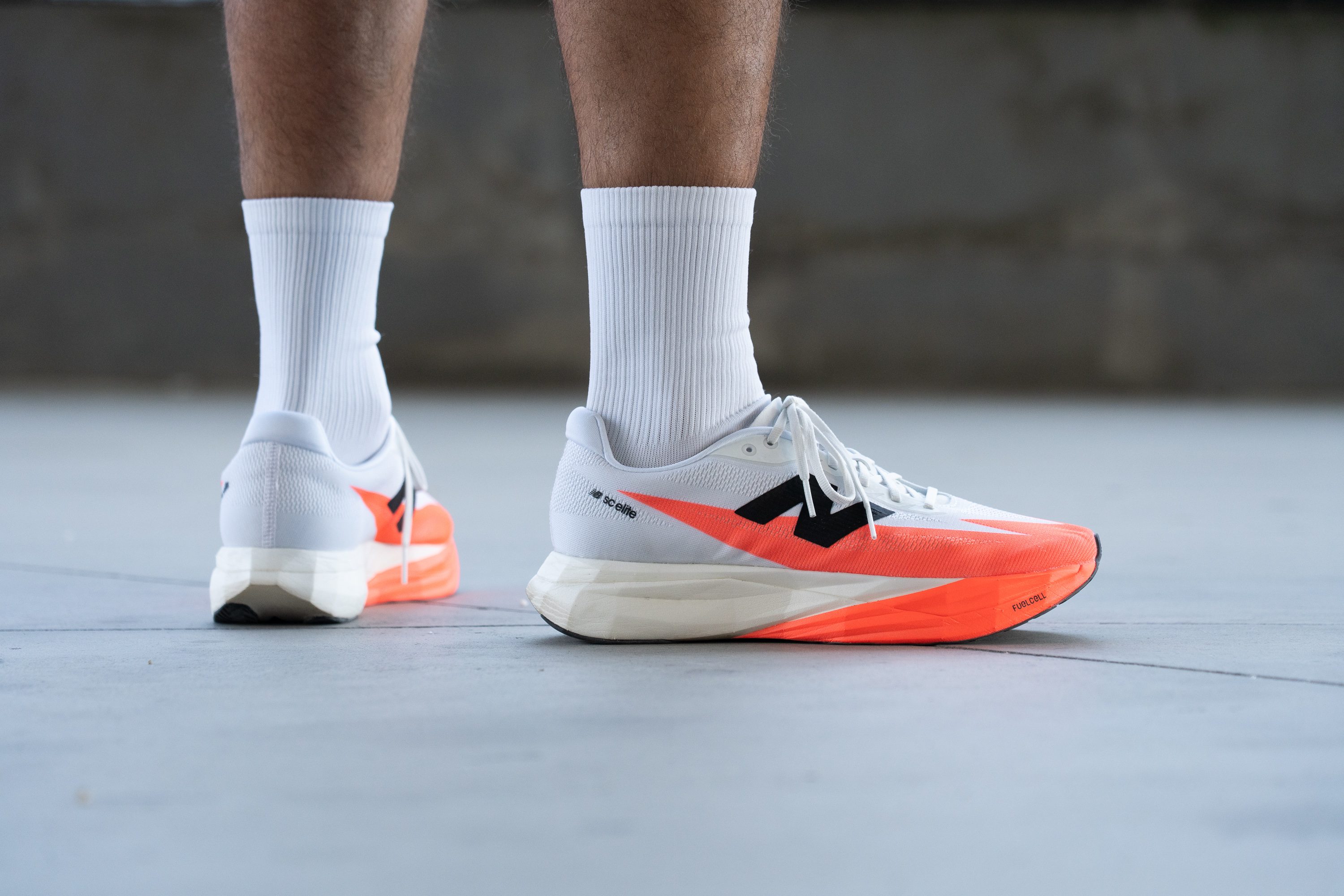
Quién NO debería comprárselas
Creemos que las Elite v5 no son la mejor opción para los corredores que necesitan estabilidad. Después de nuestras pruebas de uso corriendo con ellas, descubrimos que su diseño compacto sacrifica la sujeción, lo que las hace más adecuadas para los corredores neutros con una técnica precisa. En nuestra opinión, si estás buscando un poco de estabilidad en unas zapatillas que sean muy ligeras, deberías echarle un ojo a las Nike Alphafly 3, que tienen una base más ancha y estable.
Además, aunque la v5 es más ligera que sus predecesoras, todavía la sentimos un poco pesada en comparación con los modelos de competición de élite. Según nuestros resultados, si el peso es tu principal preocupación, creemos que las ASICS Metaspeed Ray y las Nike Vaporfly 4 son unas alternativas estupendas.
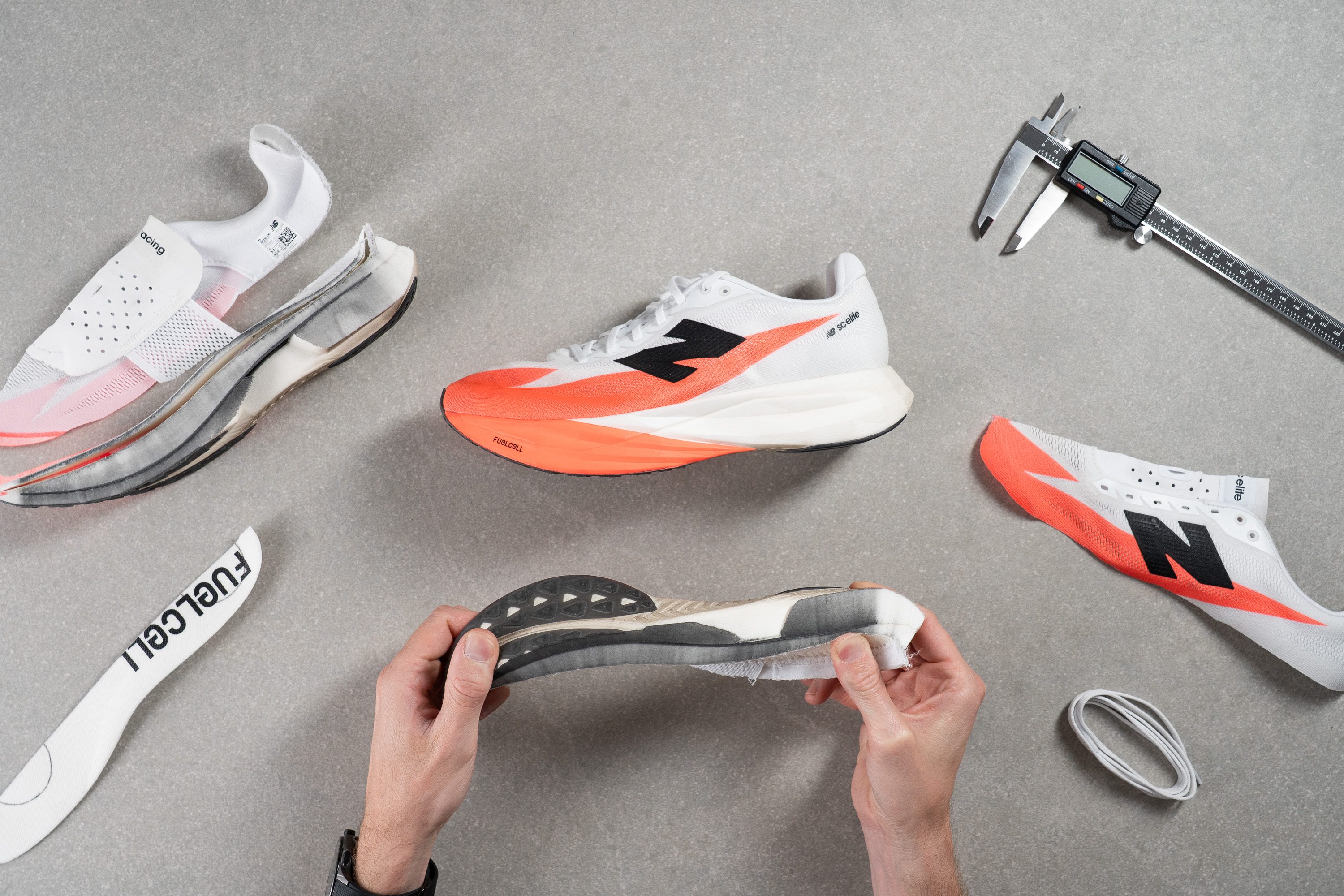
Amortiguación
Shock absorption
Analizamos las New Balance FuelCell SuperComp Elite v5 en nuestro laboratorio, así que podemos confirmar que ofrecen una absorción de impactos excelente tanto en el talón (144 SA) como en el antepié (112 SA).
Sin embargo, la parte delantera es un poco menos mullida que la de algunas de sus competidoras, lo que puede echar para atrás a algunos corredores de metatarsos. Para todos los demás atletas, ofrecen protección de sobra para cualquier distancia.
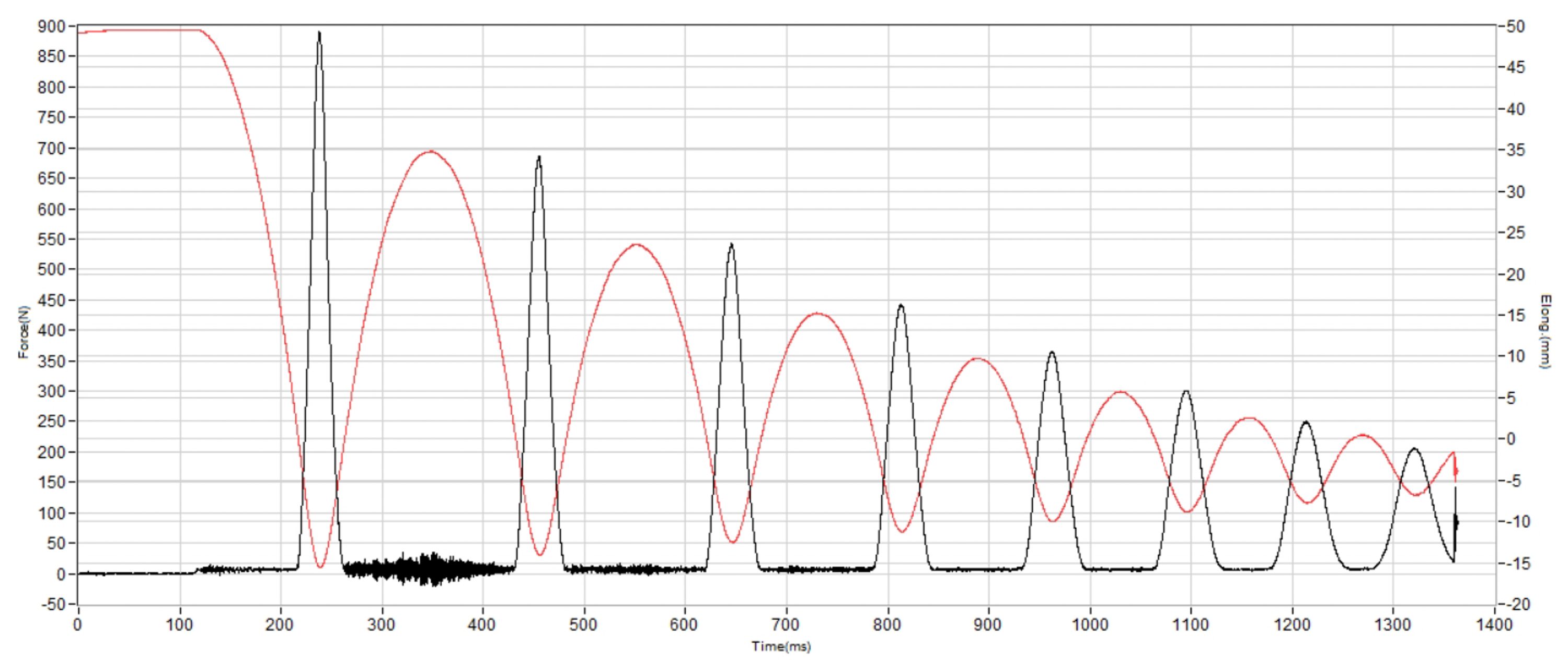
| FuelCell SuperComp Elite v5 | 144 SA |
| Media | 129 SA |
Energy return
La mediasuela FuelCell de PEBA de las Elite v5 (en serio, ojalá se llamase de otra forma para así evitar cualquier posible confusión con el combo de EVA+PEBA de las FuelCell Rebel v5) está en la categoría de espumas con un rendimiento de élite, que es justo donde debería estar para que New Balance compita con las mejores superzapatillas del mercado.
Cuando medimos su retorno de energía, vimos que alcanzaba el 74,8 % en el talón y el 74,9 % en el antepié, que son resultados muy sólidos. Sin embargo, parece que las Elite siempre terminan un poco por detrás de las superzapatillas de Adidas, ASICS y Saucony, que ahora están muy cerca o incluso superan el 80 %.
| FuelCell SuperComp Elite v5 | 74.8% |
| Media | 58.6% |
Altura de la suela en la zona del talón
La altura de la suela de las SuperComp Elite v5 en el talón ofrece justo lo que la mayoría de los runners esperan de unas zapatillas de competición de primera: estar lo más cerca posible del límite de 40 mm. Cuando las medimos, nuestro calibre marcó unos impresionantes 39,3 mm.
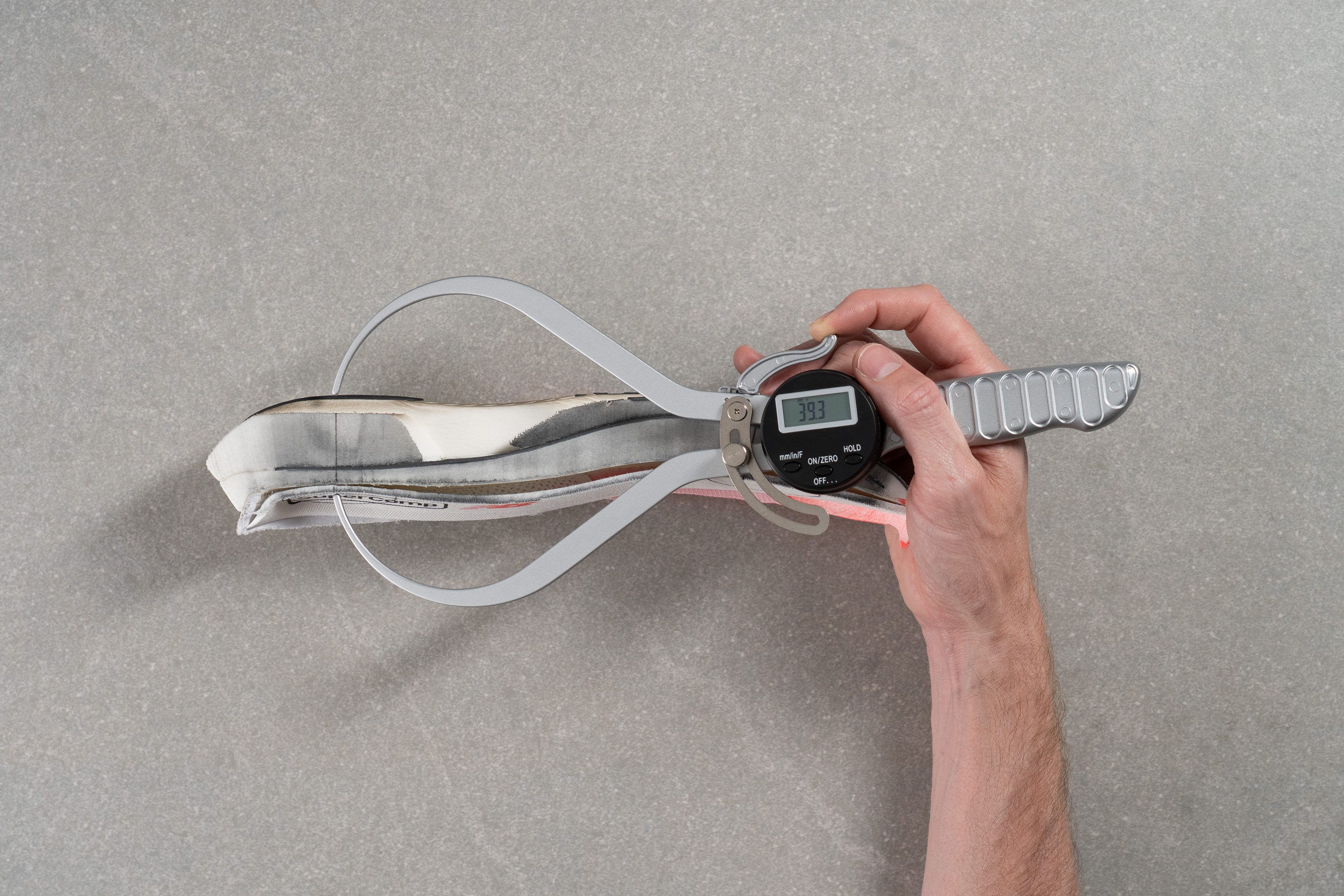
| FuelCell SuperComp Elite v5 | 39.3 mm |
| Media | 34.8 mm |
Altura de la suela en el antepié
Por otro lado, la suela en el antepié es bastante más finita, bajando del límite de 30 mm hasta los 28,6 mm. Este diseño podría no terminar de convencer a los corredores de metatarsos, que probablemente prefieran una plataforma más grandota y amortiguada como la de las ASICS Metaspeed Edge Tokyo.
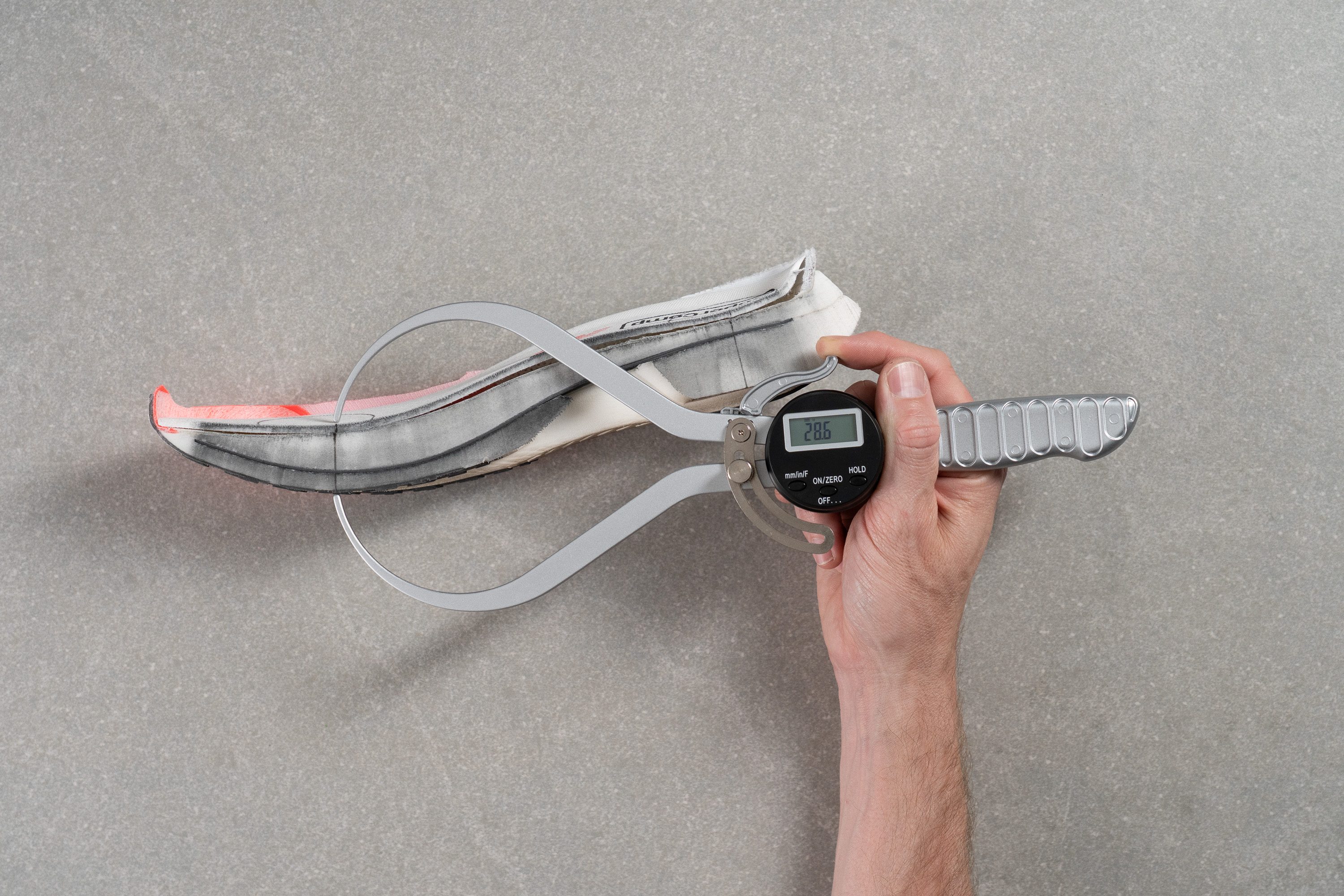
| FuelCell SuperComp Elite v5 | 28.6 mm |
| Media | 26.2 mm |
Drop
New Balance ha experimentado bastante con el drop en la serie Elite; primero estableció oficialmente 4 mm para la v4 (aunque al medirlo nos dio un resultado más alto) y ahora lo ha duplicado, alcanzando los 8 mm.
Sin embargo, cuando analizamos la v5 siguiendo las pautas oficiales de la World Athletics, descubrimos que su drop es de 10,7 mm. Esta estructura, combinada con la placa nueva y el diseño de la mediasuela, hace que al correr nos acordemos de las Vaporfly originales.
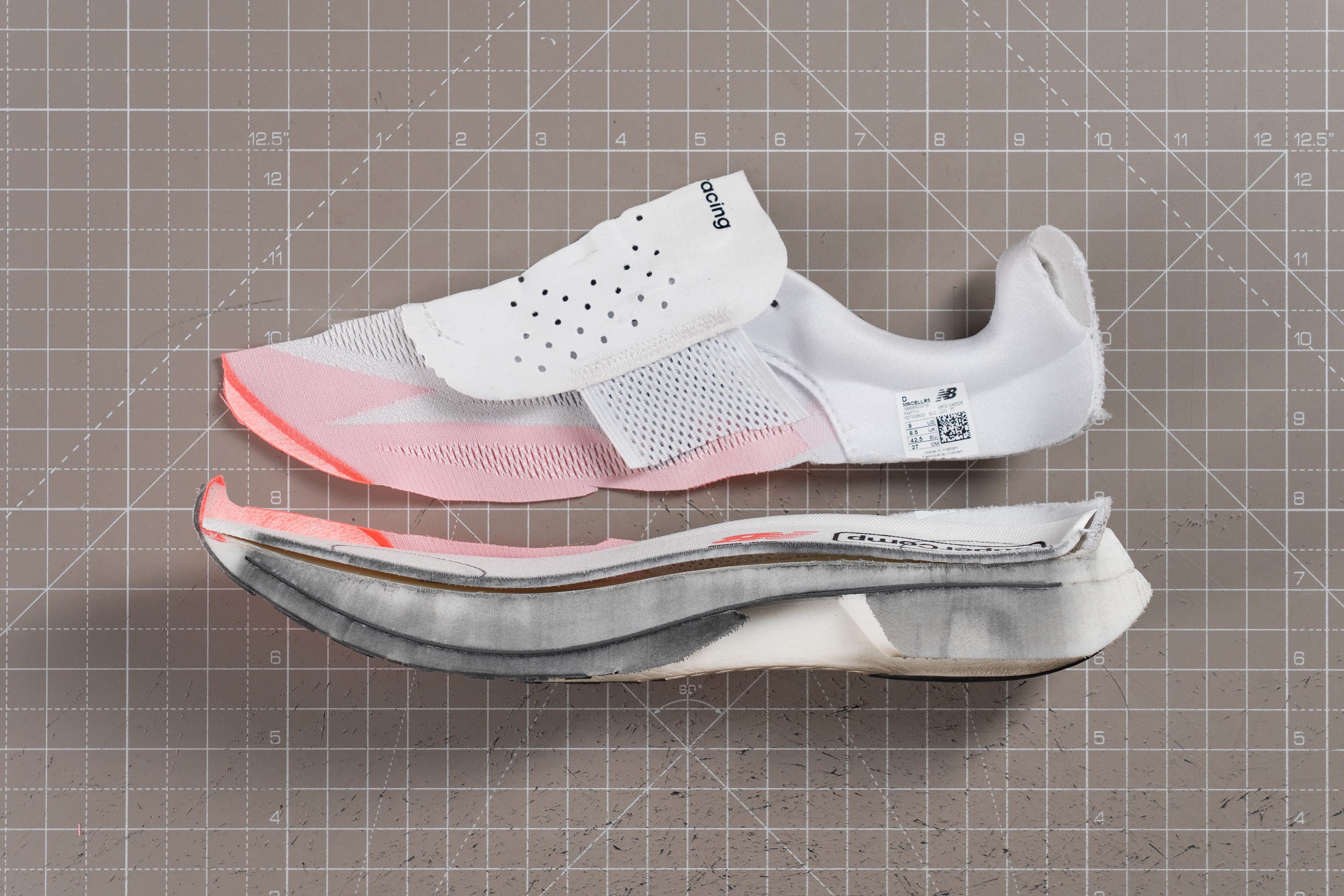
| FuelCell SuperComp Elite v5 | 10.7 mm |
| Media | 8.6 mm |
Suavidad de la mediasuela
Esta espuma FuelCell de New Balance, que está hecha con PEBA, cumple con todos los requisitos de una superespuma de calidad, ofreciendo una sensación mullida y llena de energía bajo el pie. Cuando analizamos la capa superior, nuestro durómetro marcó 15,2 HA; y como era de esperar, tienen el típico diseño clásico de las superzapatillas con dos capas de espuma y una placa de carbono en el medio.
Pero sentimos que New Balance todavía está un par de años por detrás de otras marcas en cuanto a innovación en espumas. Sucedió con las primeras 4 ediciones de las RC/SC Elite, y parece que ahora está pasando lo mismo.
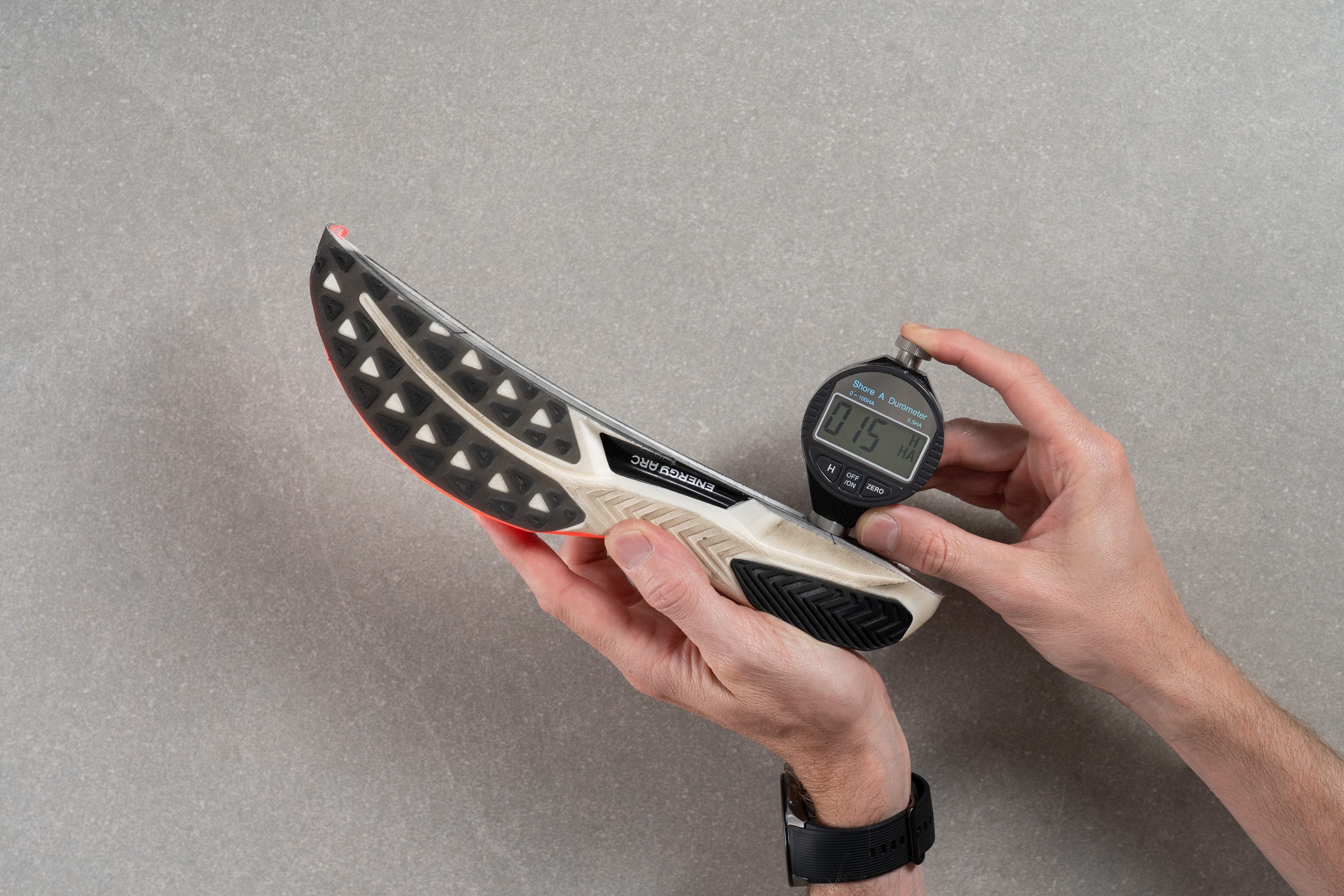
| FuelCell SuperComp Elite v5 | 15.2 HA |
| Media | 20.4 HA |
Suavidad de la espuma secundaria
La capa secundaria de espuma FuelCell PEBA utiliza, básicamente, el mismo compuesto que la principal. Obtuvo un resultado de 15,0 HA cuando la analizamos con nuestro durómetro, que está dentro de los parámetros normales.
A diferencia de otras marcas, que ajustan las densidades para ofrecer más estabilidad, New Balance no se complicó la vida. Y la verdad es que funcionó muy bien en este modelo.
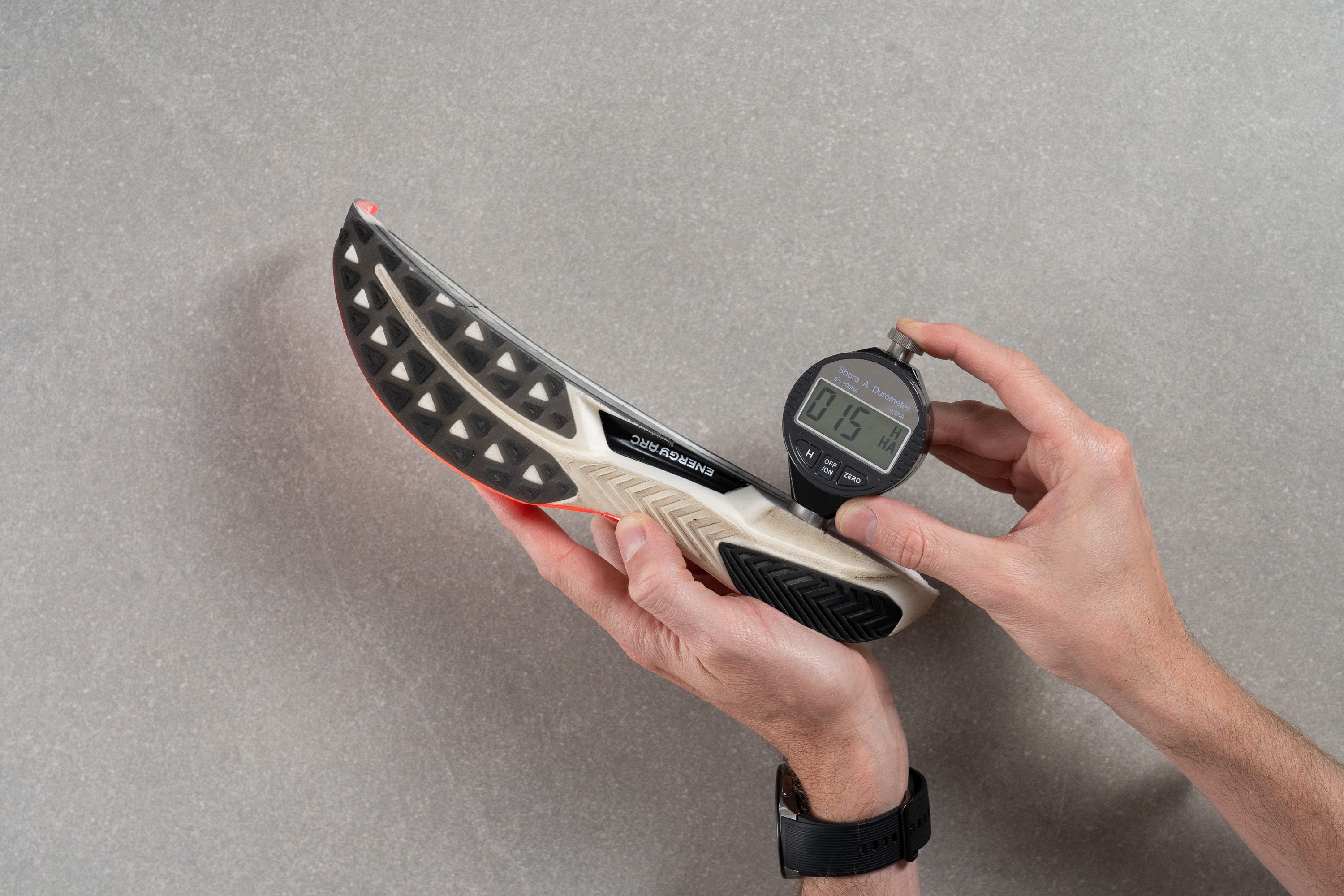
| FuelCell SuperComp Elite v5 | 15.0 HA |
| Media | 22.7 HA |
Rocker
En cuanto le pudimos echar un vistazo al rocker, vimos que la foto que le sacamos representa perfectamente lo que sentimos al correr: estas zapatillas son una opción estupenda para los corredores a los que no les gustan los rockers que son muy agresivos, y echan de menos la fluidez y la estabilidad de los modelos de competición clásicos.
En el antepié podemos ver, claramente, una suave curva ascendente; y teniendo en cuenta lo altas que son estas zapatillas y que tienen una placa de carbono, este diseño era inevitable. Incluso así, New Balance mantuvo esa geometría moderada y bastante tardía, ofreciendo la cantidad justa de rocker para que las transiciones sean eficientes.
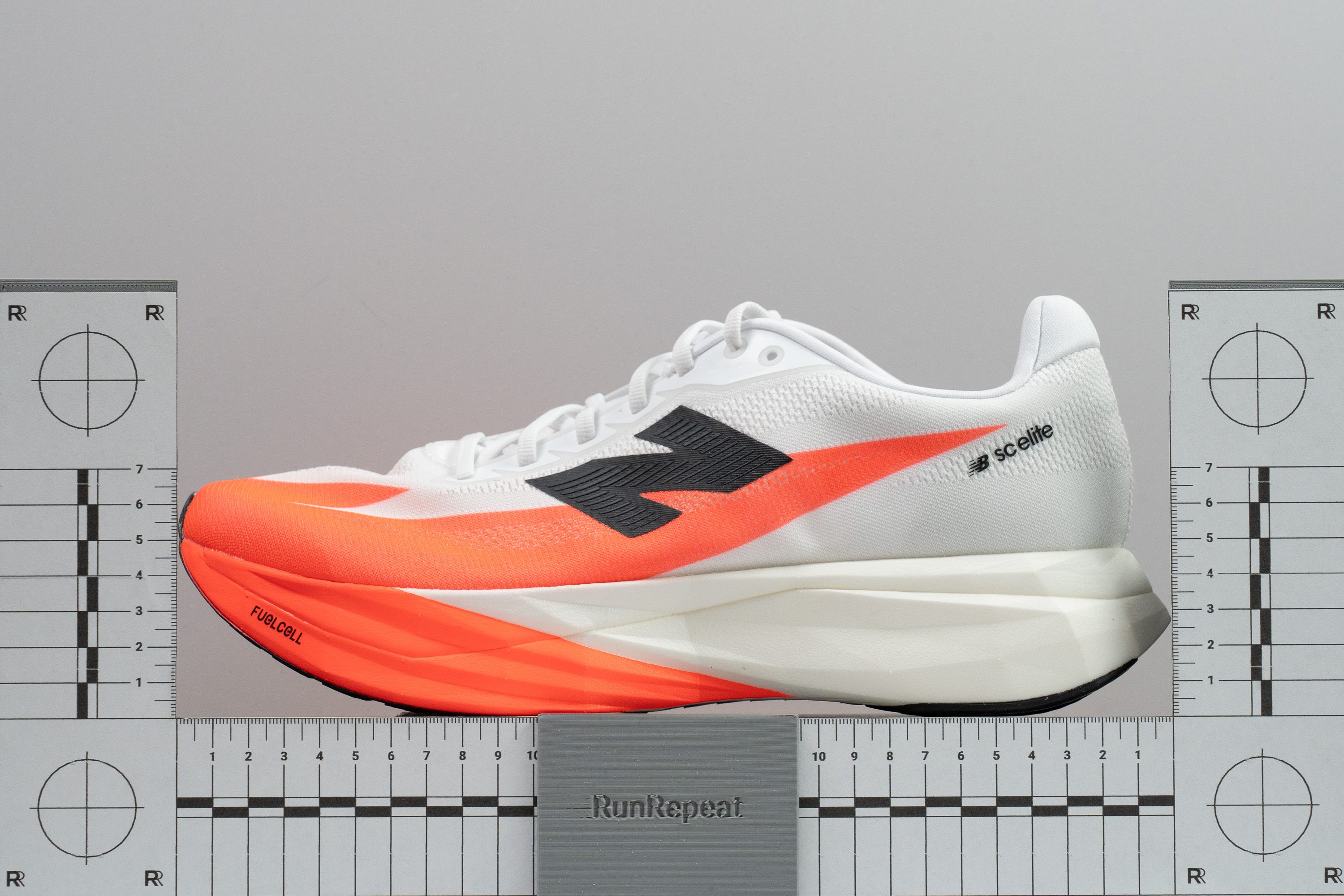
Placa
Otra actualización pequeña pero importante en las SuperComp Elite v5 viene de su placa de carbono. El sistema Energy ARC sigue presente con su forma cóncava, pero descubrimos que ahora estas zapatillas se parecen más a unas Vaporfly cuando las miras de lado.
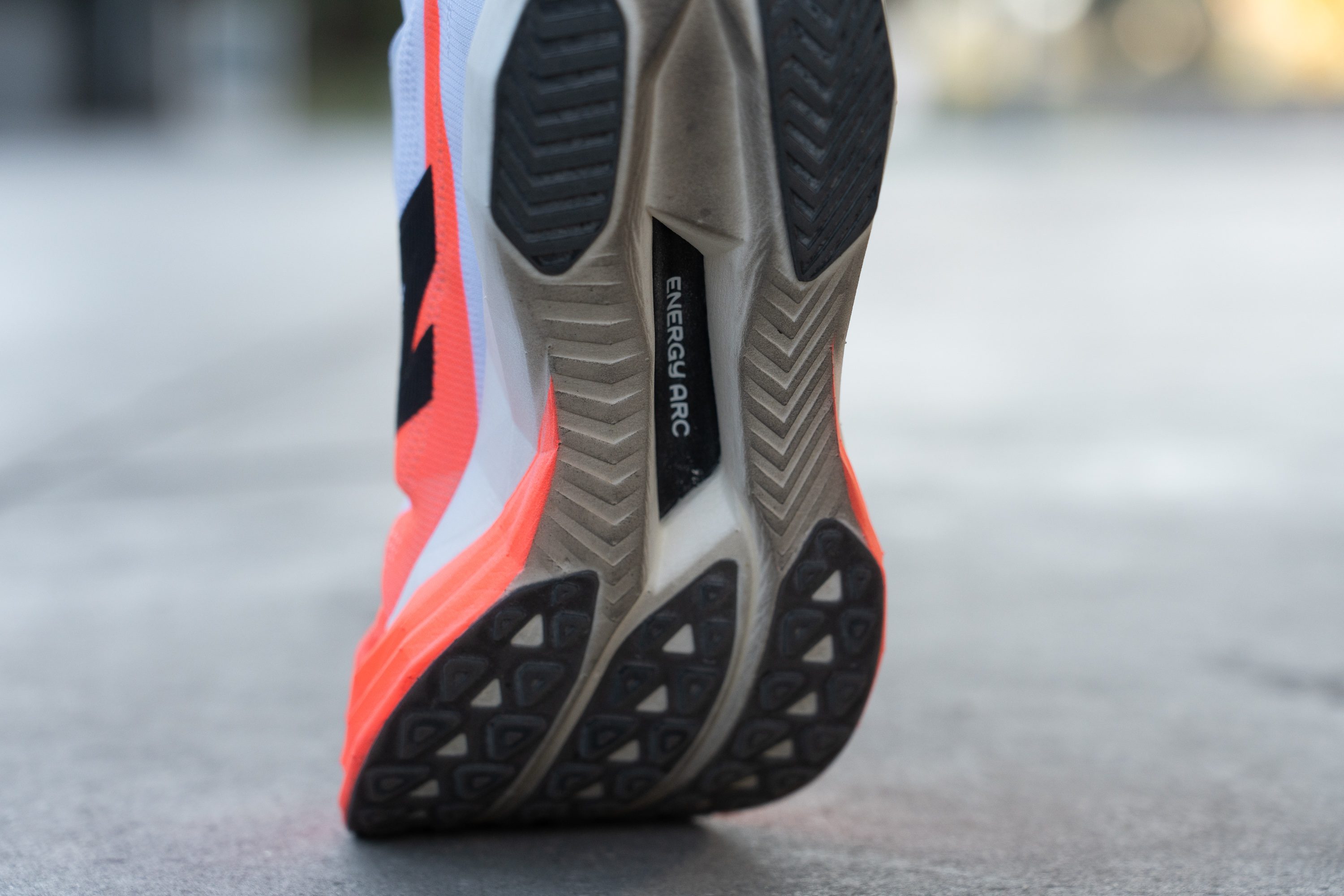
En las versiones anteriores, la placa era más plana, lo que hacía que las zapatillas fuesen mejores para los principiantes o para las distancias largas a ritmo bajo, pero... peores para los esfuerzos de velocidad. Pero ahora, con este diseño más agresivo y marcado, se sienten mucho más llenas de energía y listas para la competición.
Tallaje y ajuste
Talla
Las New Balance FuelCell SuperComp Elite v5 tallan bien (12 votos).
Anchura / Ajuste
Una de las características que hizo que las SuperComp Elite v4 fueran la mejor opción para muchos corredores fue su ajuste amplio. Para ser unas superzapatillas, son sorprendentemente espaciosas, y a muchos runners no les importaba sacrificar un poquito de rendimiento para conseguir un extra de comodidad.
Pero la versión 5 ya no es así. Ahora se sienten más como unas zapatillas de competición estándar, y es que tienen un ajuste más ceñido y centrado en el rendimiento. Cuando medimos su anchura, nos dio 93,8 mm, así que son bastante más estrechas que los 96,0 mm del modelo anterior.
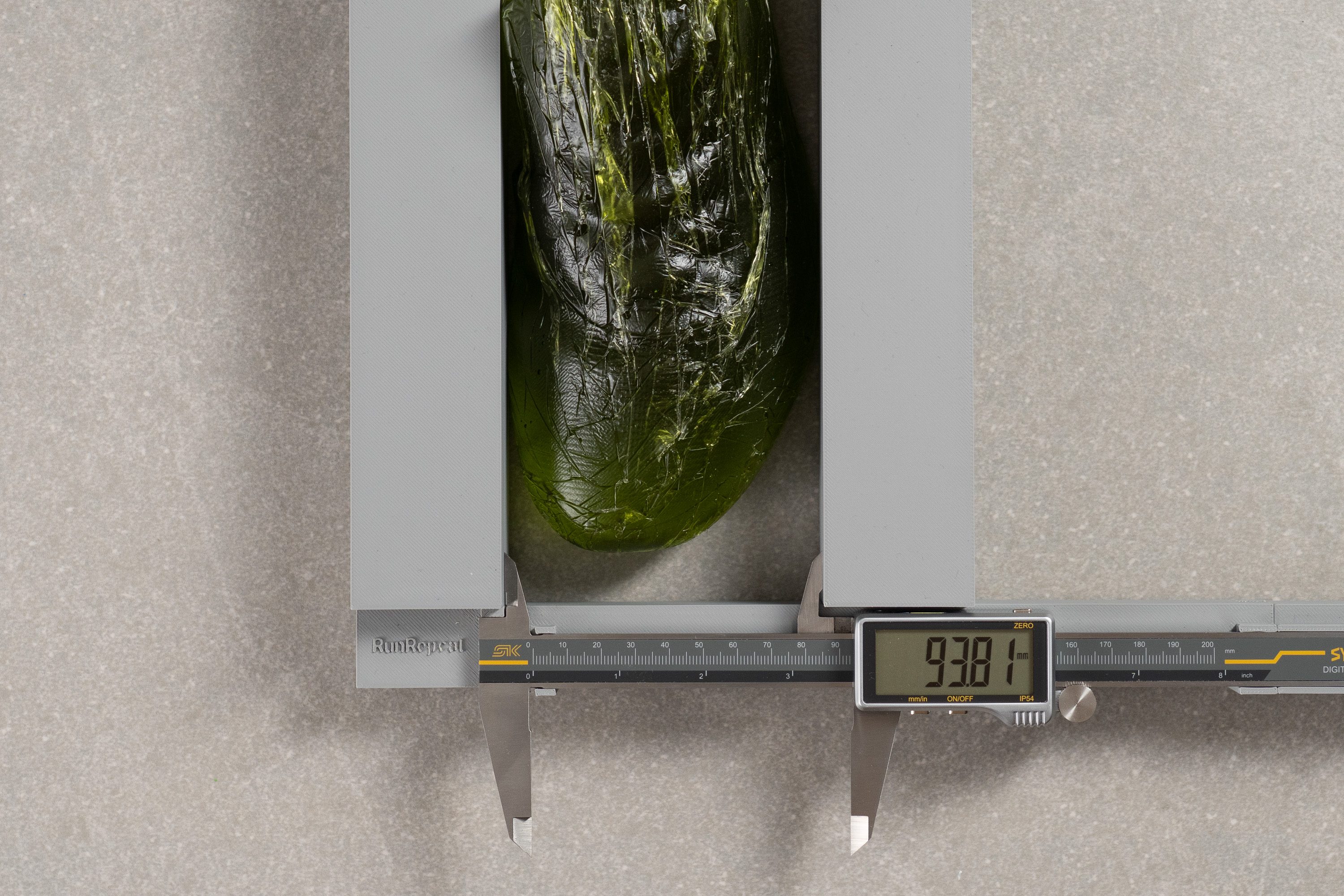
| FuelCell SuperComp Elite v5 | 93.8 mm |
| Media | 95.1 mm |
Anchura de la parte delantera
Pero no te preocupes, que tenemos buenas noticias. Aunque la parte delantera es más estrecha que la de sus predecesoras (mide 74,5 mm, cuando la versión 4 alcanzó 78,4 mm), sigue siendo más ancha que la media de los modelos de running. De hecho, hasta es más espaciosa que la de muchas zapatillas de entrenamiento diario.
Además, New Balance sigue siendo una de las pocas marcas que ofrece unas superzapatillas en tallas anchas, aunque solo en algunos países, como EE. UU.
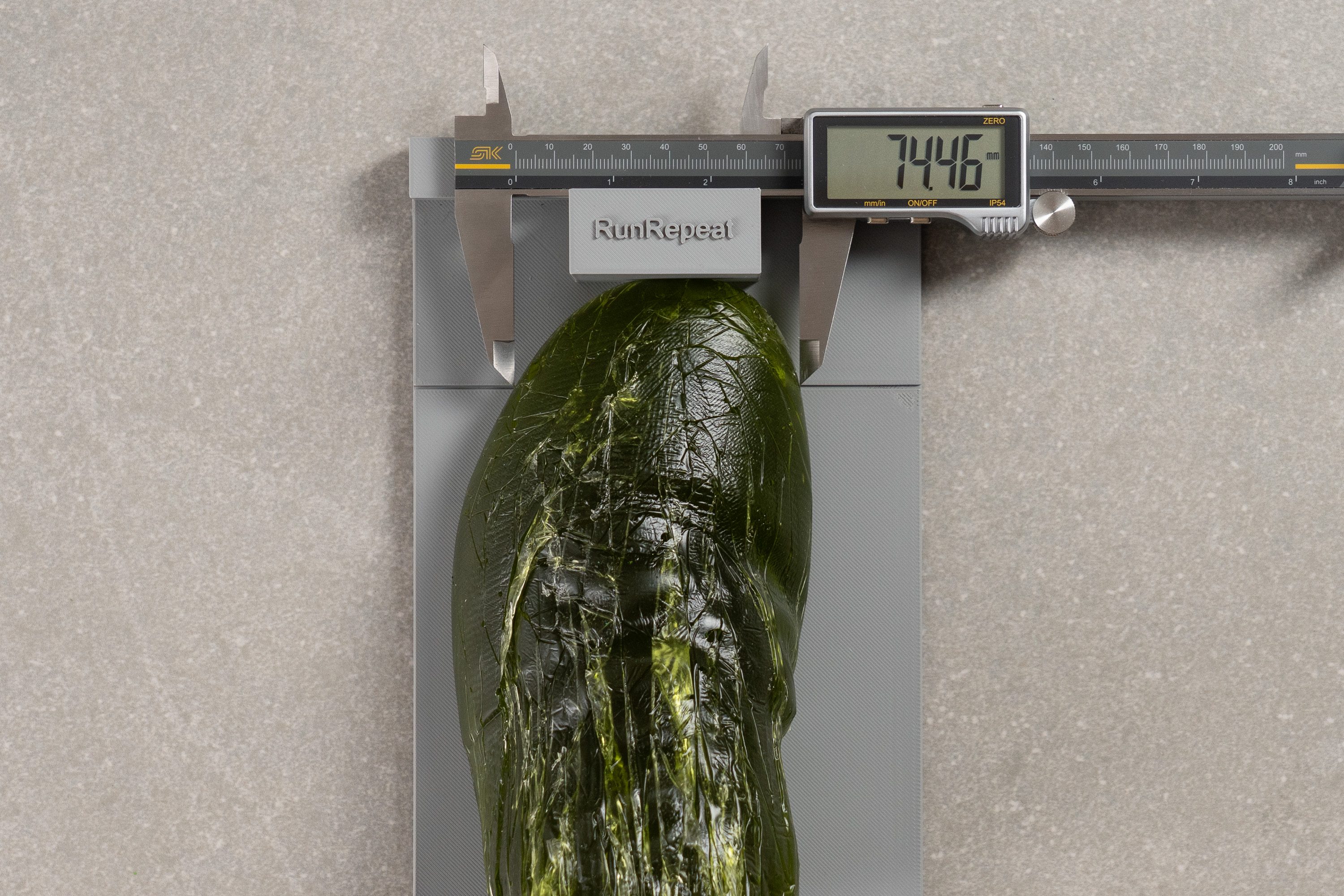
| FuelCell SuperComp Elite v5 | 74.5 mm |
| Media | 73.3 mm |
Altura de la parte delantera
También medimos la altura de la parte delantera para saberlo todo sobre el ajuste.
Y nuestro calibre marcó 26,4 mm, lo que ofrece un gran equilibrio entre un cierre seguro y suficiente espacio para poder mover los dedos de forma natural. La verdad es que son perfectas para las distancias de maratón.
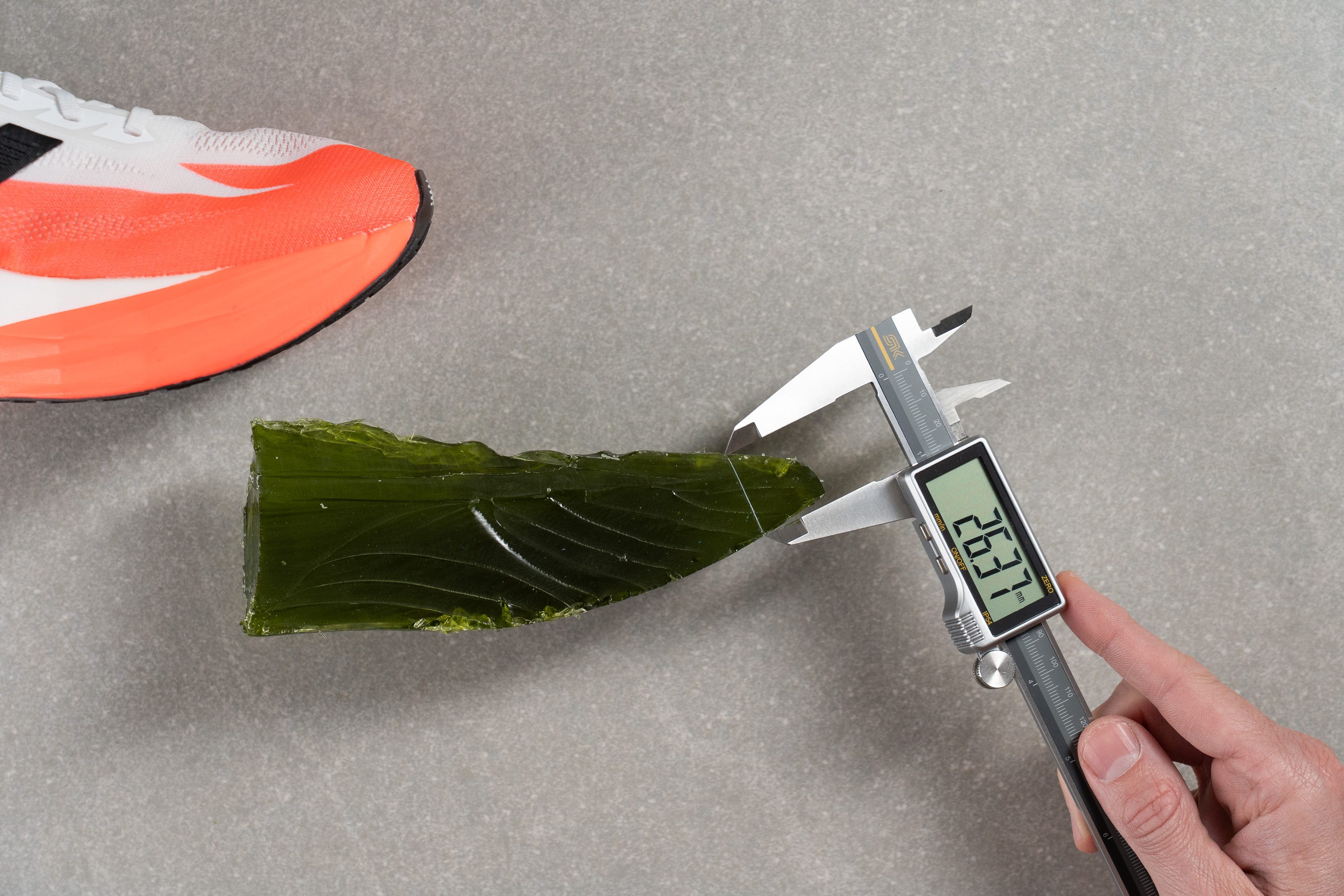
| FuelCell SuperComp Elite v5 | 26.4 mm |
| Media | 27.1 mm |
Tracción / Agarre
Traction test
Queremos darle la enhorabuena a New Balance, ya que consiguió que estas zapatillas se llevasen una puntuación de 0,61 en nuestra prueba de tracción sobre asfalto mojado. Descubrimos que este resultado ofrece un agarre seguro y listo para competir haga el tiempo que haga, y supera el resultado de la versión 4 en 0,15..., ¡sin ser más caras!
Esta mejora viene de que New Balance ha pasado del caucho tradicional a un compuesto de poliuretano más avanzado y liviano llamado Ultra Light VPU, parecido al que se utiliza en las Adidas Adizero Adios Pro 4.
| FuelCell SuperComp Elite v5 | 0.61 |
| Media | 0.48 |
Diseño de la suela exterior
Estas zapatillas tienen dos piezas rectangulares que protegen el talón, así como un amplio corte central que expone la placa Energy Arc que recorre el mediopié. En el antepié tienen tacos y cortes triangulares que se extienden sin interrupción desde la zona del mediopié hasta la de los dedos.
En nuestra opinión, está claro que la suela exterior de las Elite v5 ofrece una cobertura de caucho generosa para unas zapatillas de alto rendimiento, demostrando una vez más que New Balance pone la durabilidad por encima de reducir el peso lo máximo posible, que es algo que vemos en otras marcas.
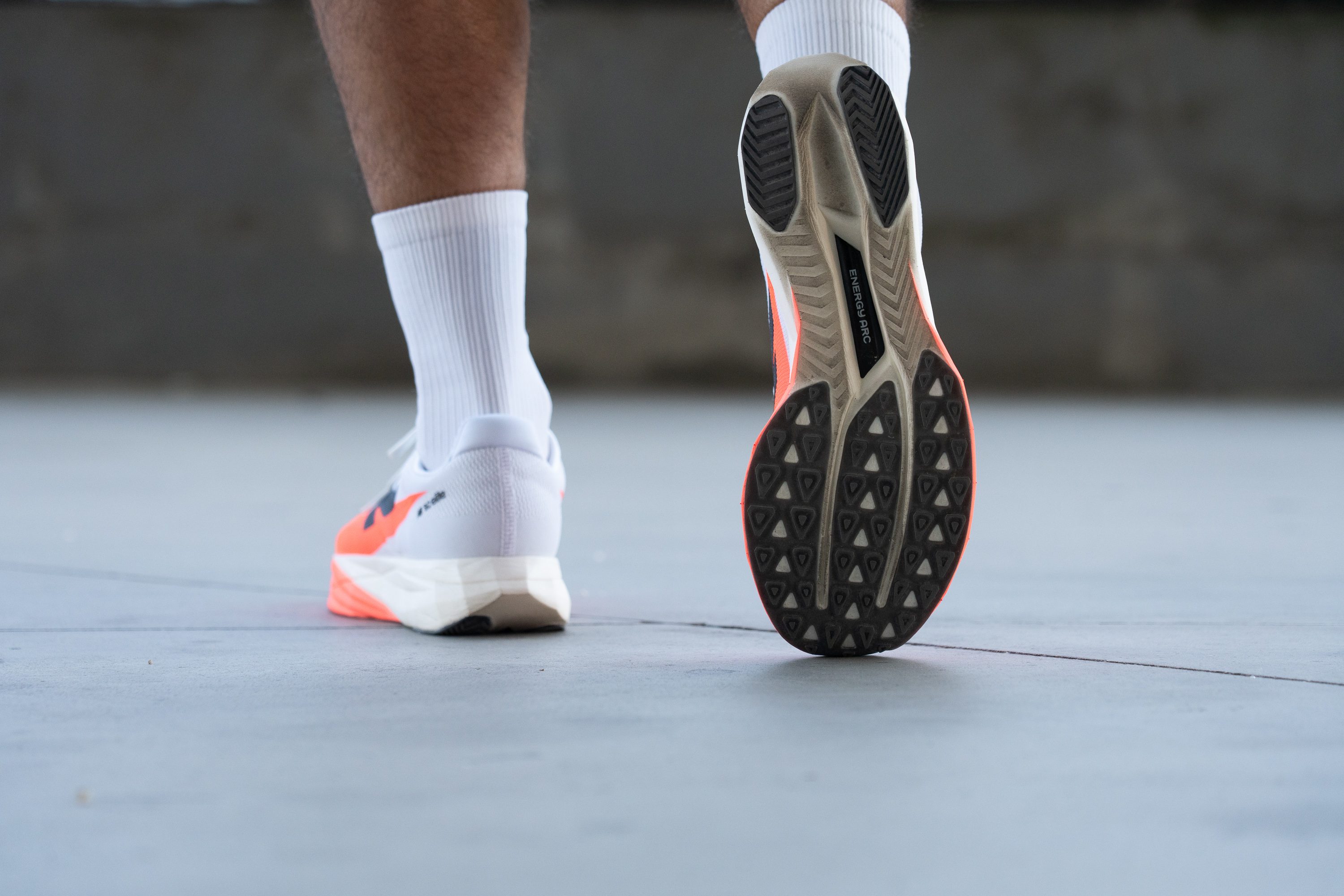
Flexibilidad / Rigidez
En nuestra prueba de flexión de 30 grados, las New Balance FuelCell SuperComp Elite v5 nos demostraron que eran más flexibles que sus predecesoras y que la mayoría de las superzapatillas con placa de carbono, ya que solo necesitaron 16,2 N para doblarse.
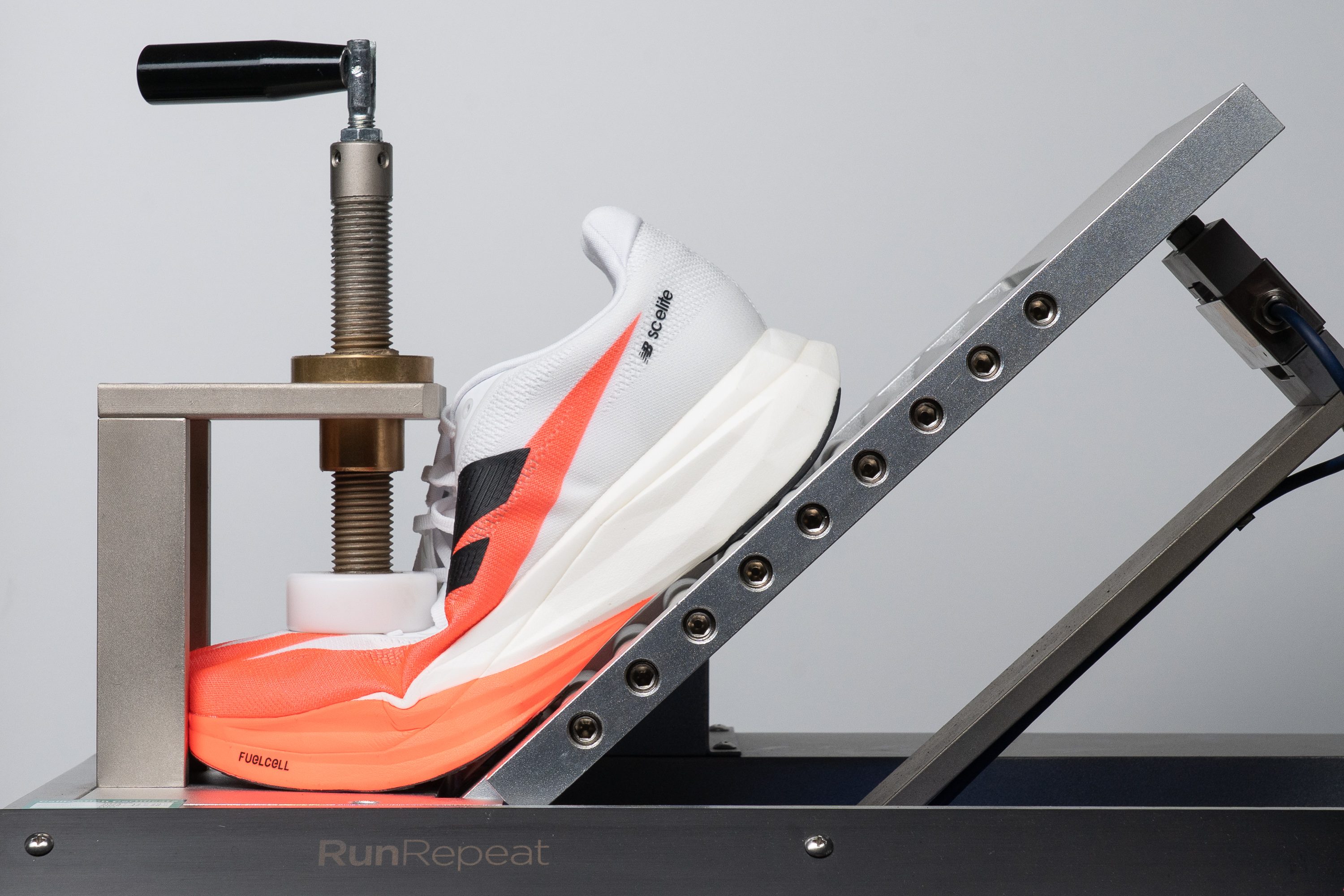
| FuelCell SuperComp Elite v5 | 16.2N |
| Media | 15.3N |
Peso
El peso siempre había sido uno de los mayores problemas para la serie Elite de NB, ya que cada versión se sentía más pesada que la mayoría de sus competidoras. Con la v5, New Balance finalmente solucionó este problema, reduciendo el peso de 232 g a solo 198 g.
Ahora estas zapatillas se sienten más ligeras, las transiciones son más fluidas y ya no pesan un quintal. Incluso así, marcas como ASICS y Nike también siguen superando los límites, y han logrado cogerle mucha ventaja a New Balance con sus últimas superzapatillas.
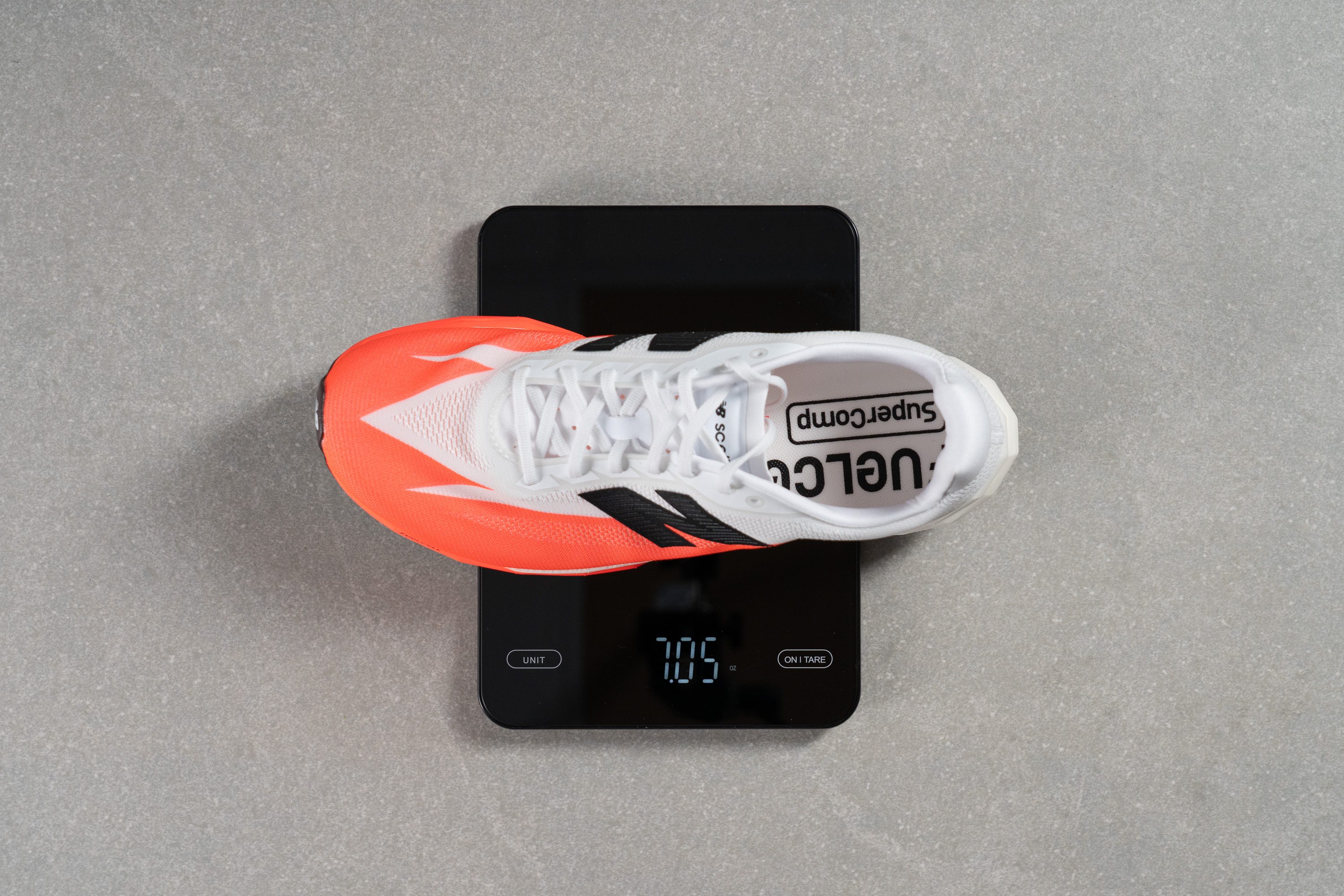
| FuelCell SuperComp Elite v5 | 7.0 oz (198g) |
| Media | 9.3 oz (264g) |
Transpirabilidad
Dependiendo de la persona, la anterior versión de estas zapatillas puede ser un 10 o un 0. Sin embargo, esta vez New Balance mejoró claramente tanto la calidad como la comodidad.
Descubrimos que la transpirabilidad de las Elite v5 es excelente, y es que se llevaron un 4/5 en nuestra prueba. Esto garantiza que ofrecen un buen rendimiento al correr en verano, y al mismo tiempo se encargan de que los pies estén cómodos en los días fríos.
El upper no está muy estructurado, como era de esperar de unas superzapatillas. Se centra en reducir el peso y en ofrecer una transpirabilidad estupenda tanto en el antepié como en el mediopié.
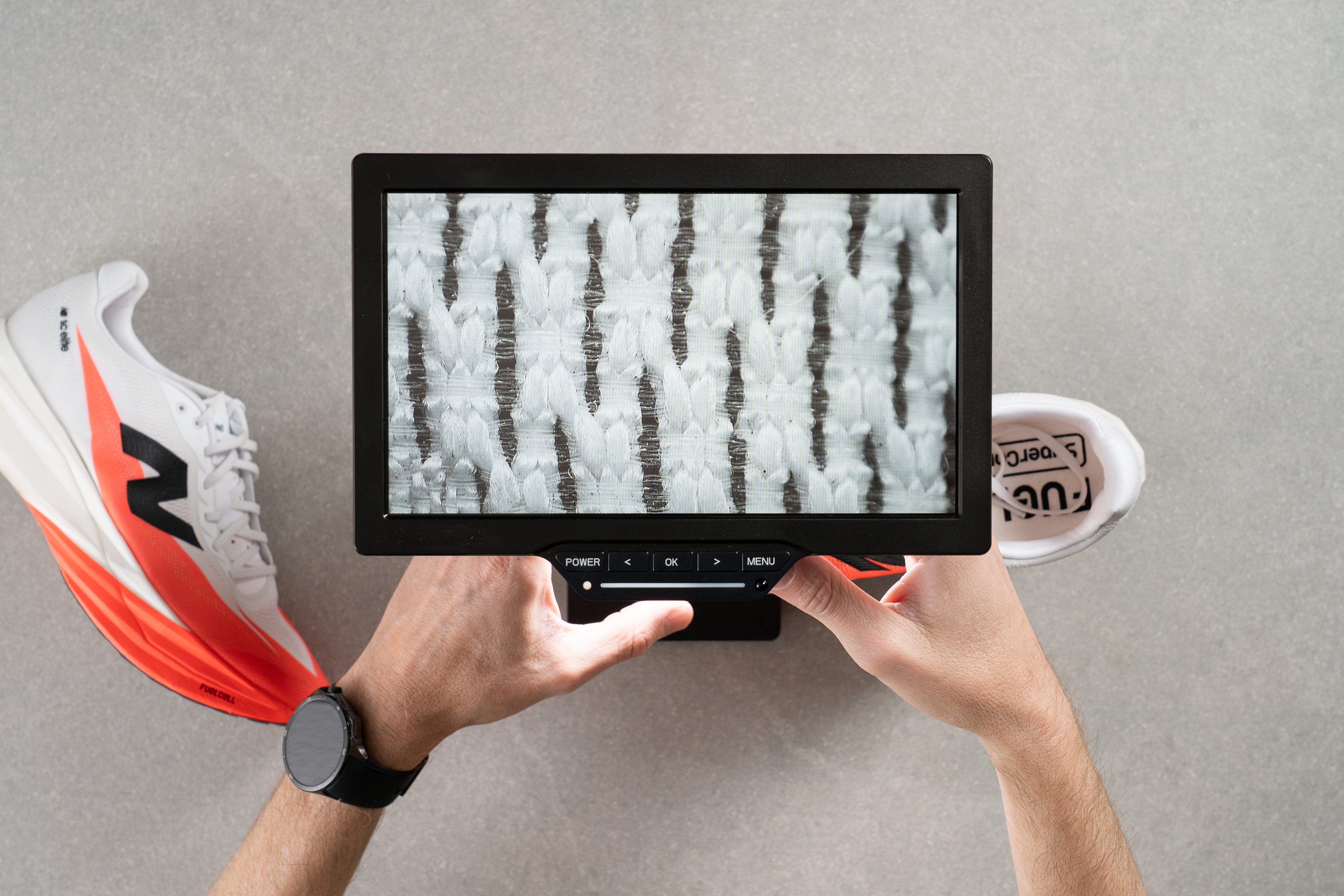
Gracias a nuestro microscopio, descubrimos que este modelo tiene una malla que combina hilos de nailon y poliéster en un patrón preciso y cuidadosamente diseñado. La calidad general de la estructura está a la altura del precio premium de estas zapatillas.
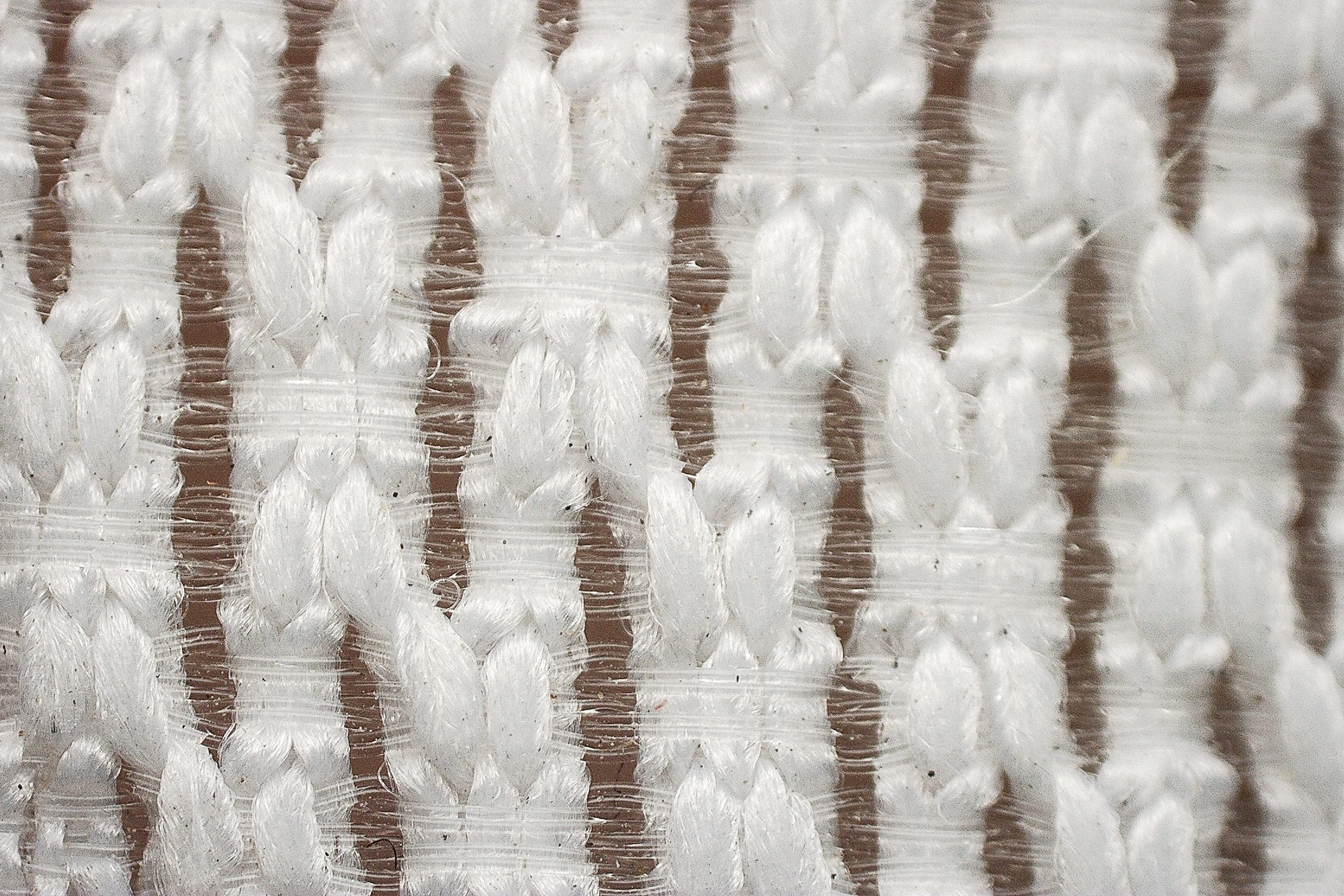
La verdad es que, en general, nos gustó mucho este nuevo upper. El material se siente más suave, más cómodo en el pie, y New Balance solucionó totalmente los problemas de la lengüeta y del talón de las Elite v4.
| FuelCell SuperComp Elite v5 | 4 |
| Media | 3.7 |
Estabilidad
Prueba de estabilidad lateral
En nuestra opinión, las FuelCell SuperComp Elite v5 están diseñadas únicamente para los corredores neutros con una mecánica de carrera eficiente.
No son unas zapatillas que les podamos recomendar a los corredores que tienen algún grado de pronación, ni siquiera si es leve. Aunque ofrecen un poco de sujeción en el antepié, ahora el talón es muy estrecho, lo que obliga a cada runner a depender de su propia estabilidad en cada paso.
Rigidez torsional
Como era de esperar de cualquier modelo de competición moderno, la rigidez torsional de las Elite v5 es alta. Eso sí, estas zapatillas han conseguido destacar, ya que se han llevado un 4/5 en vez del típico 5/5, ofreciendo una sensación un poco más flexible y haciéndolas una opción un poco mejor para los corredores principiantes.
| FuelCell SuperComp Elite v5 | 4 |
| Media | 3.5 |
Rigidez del contrafuerte del talón
El contrafuerte del talón está sorprendentemente bien acolchado para formar parte de unas superzapatillas, lo que nos vuelve a demostrar que New Balance pone primero la comodidad y después una reducción del peso general. Incluso así, estas zapatillas siguen siendo bastante flexibles, ya que se llevaron un 2/5 en nuestra prueba de rigidez.
| FuelCell SuperComp Elite v5 | 2 |
| Media | 2.9 |
Anchura de la mediasuela - antepié
Cuando medimos la anchura de la suela en el antepié, nuestro calibre marcó 107,0 mm. Este perfil más finito nos recuerda a las superzapatillas más tradicionales, ya que se aleja de los diseños más anchos. Esta actualización hace que las Elite v5 se sientan más fluidas en los pies a ritmos rápidos, como en los esfuerzos de 5K o 10K, y también destacan en las repeticiones de 1,5 km.
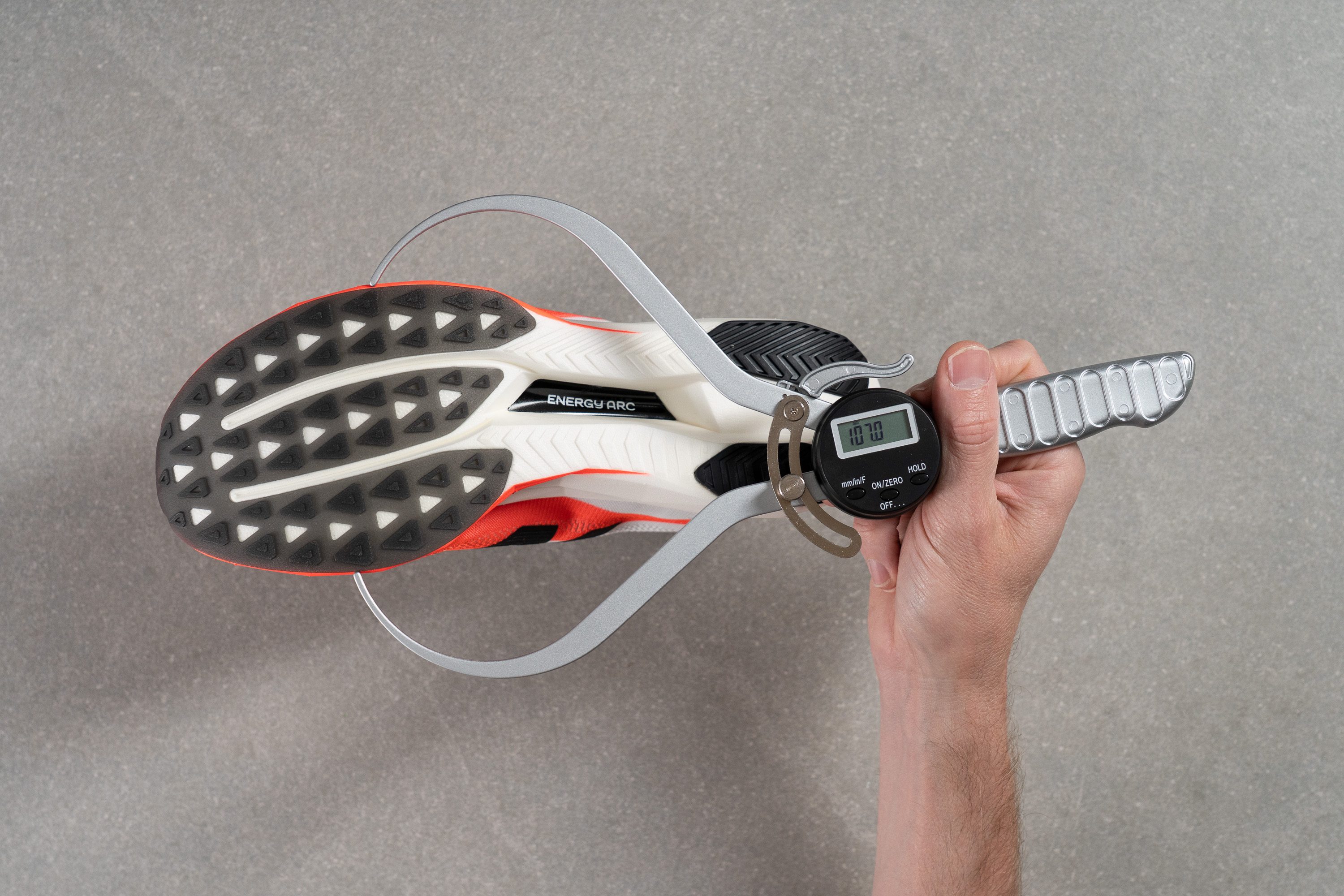
| FuelCell SuperComp Elite v5 | 107.0 mm |
| Media | 114.4 mm |
Anchura de la mediasuela - talón
Uno de los mayores cambios en el diseño de las FuelCell SuperComp Elite v4 está en la zona del talón. Con solo 71,6 mm, las Elite v5 son muy estrechas, apostando total y absolutamente por un enfoque orientado a la competición, y también por una reducción de peso que pone antes la agilidad que la estabilidad.
A los corredores a los que les gustó el talón estándar de 88,7 mm de anchura de las v4, a lo mejor este nuevo modelo les parece demasiado extremo, y es que está entre los más estrechos que hemos analizado. De hecho, ¡se acerca mucho a la medida de las zapatillas de atletismo!
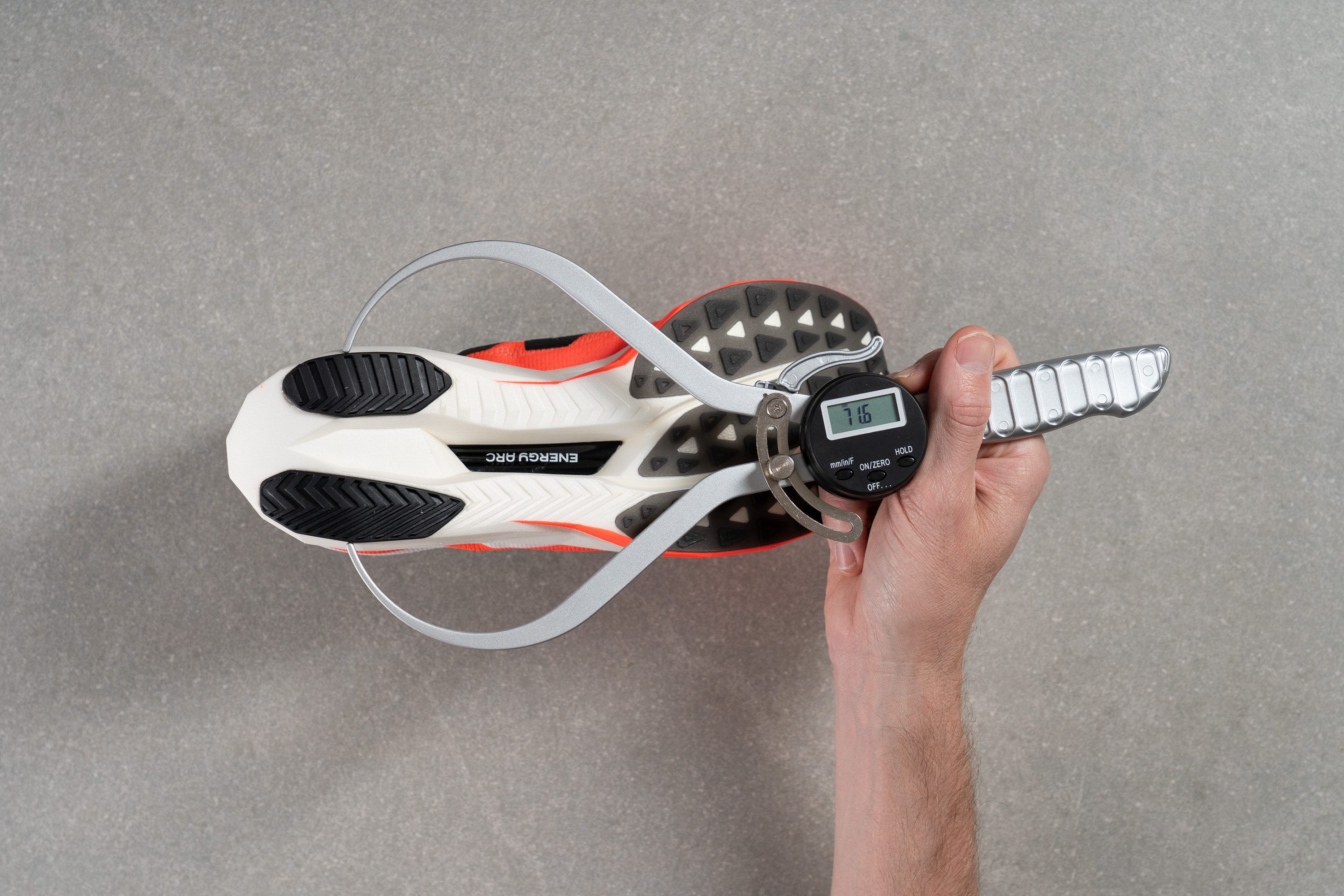
| FuelCell SuperComp Elite v5 | 71.6 mm |
| Media | 90.7 mm |
Durabilidad
Durabilidad de la parte delantera
Una desventaja común de muchas superzapatillas es que su parte delantera es frágil, y las SuperComp Elite v5 siguen esa moda, llevándose solo un 1/5 en nuestra prueba de durabilidad con el Dremel.
| FuelCell SuperComp Elite v5 | 1 |
| Media | 2.6 |
Durabilidad del acolchado del talón
Le dimos caña al acolchado del talón con nuestro Dremel utilizando los mismos ajustes: 2 N de fuerza y 5K RPM. El resultado fue un poco peor que la media, pero estas NB consiguieron llevarse un 3/5, así que no hay nada de lo que preocuparse, ya que resolvieron el problema del deslizamiento del talón.
| FuelCell SuperComp Elite v5 | 3 |
| Media | 3.4 |
Durabilidad de la suela
Luego analizamos la suela exterior. La verdad es que teníamos muchas ganas, ya que los cauchos de poliuretano han demostrado que tienen un agarre increíble, pero... una durabilidad incierta. En este caso, medimos un desgaste de 1,1 mm en el talón, que es un resultado sólido.
| FuelCell SuperComp Elite v5 | 1.1 mm |
| Media | 1.1 mm |
Grosor de la suela
La suela exterior no nos preocupa para nada, ya que tiene un grosor de 3,5 mm.
La verdad es que es una cantidad impresionante para unas zapatillas de competición, lo que hace que las Elite v5 estén entre las mejores opciones para los corredores a los que no les importa sacrificar un poco de ligereza a cambio de otras ventajas.
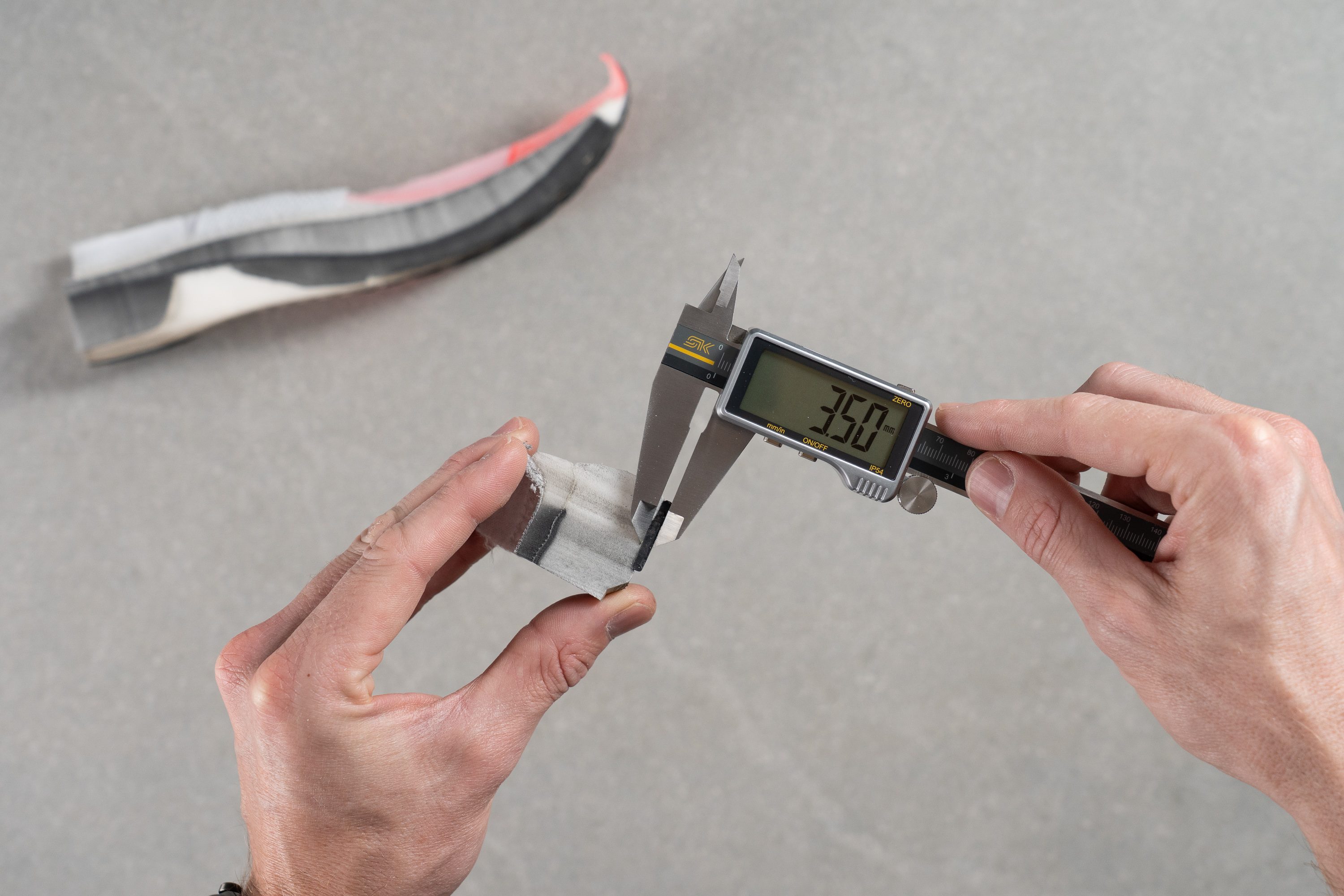
| FuelCell SuperComp Elite v5 | 3.5 mm |
| Media | 3.2 mm |
Varios
Grosor de la plantilla
La plantilla es un poquito más finita de lo habitual en las zapatillas de running, con un grosor de 3,1 mm.
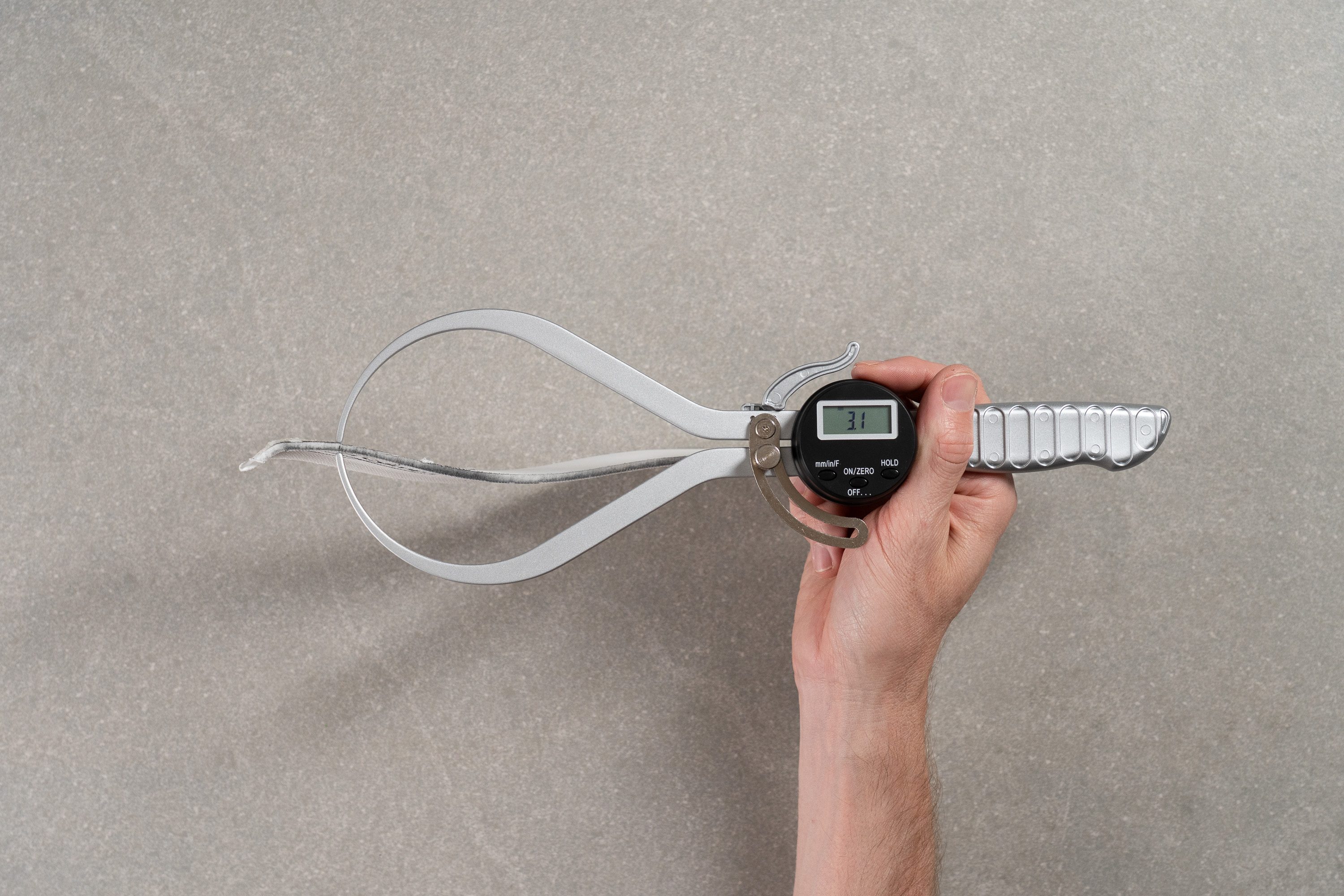
| FuelCell SuperComp Elite v5 | 3.1 mm |
| Media | 4.5 mm |
Plantilla extraíble
A las Elite v5 les puedes quitar la plantilla sin problemas y cambiársela por la que quieras. Es más, son de las pocas superzapatillas que te dejan hacer esto cómodamente gracias a lo bien diseñado que está su interior.
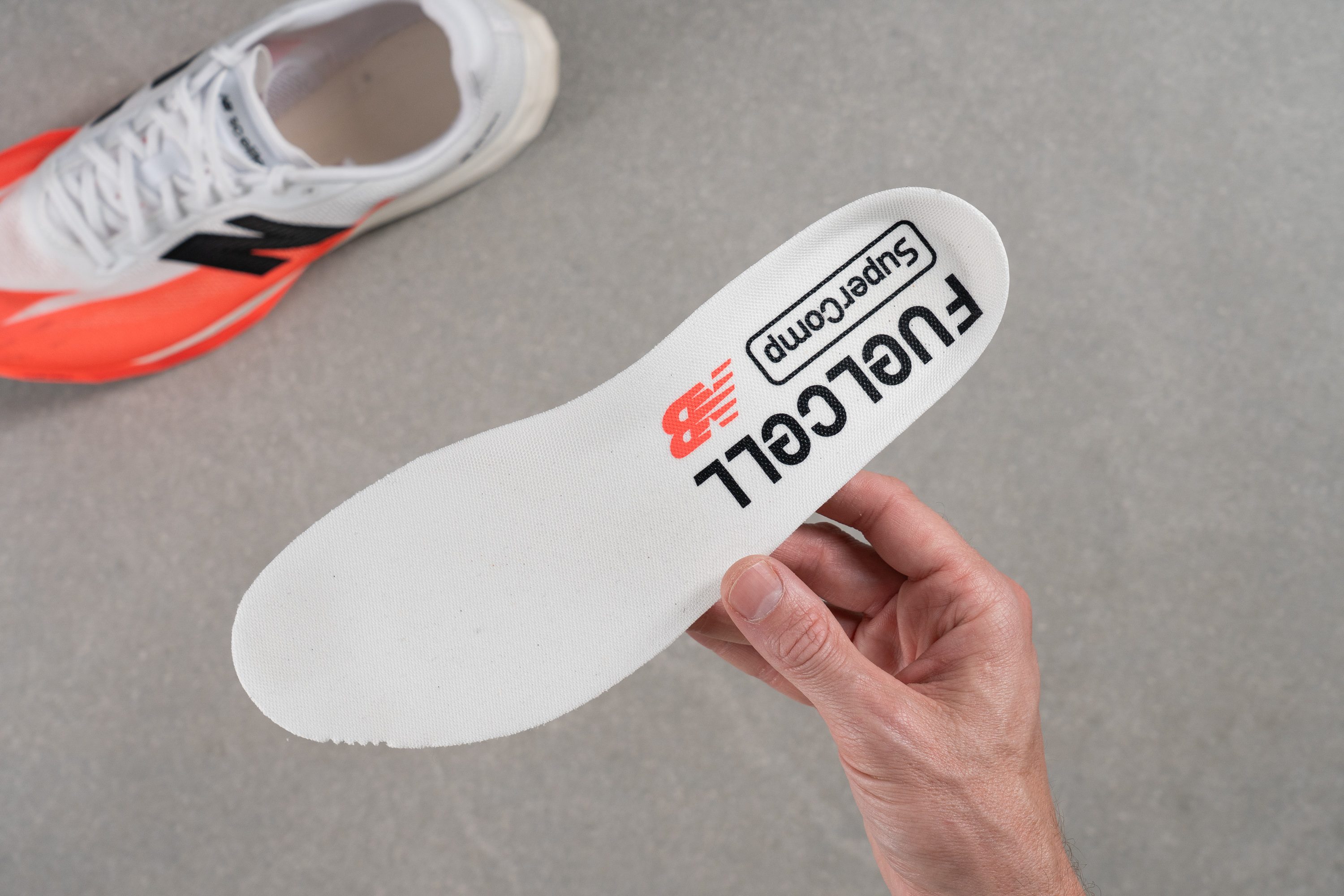
| FuelCell SuperComp Elite v5 | Sí |
Rigidez de la mediasuela en frío (%)
Gracias a su mediasuela FuelCell, que es completamente de PEBA, estas zapatillas solo se volvieron un 9 % más rígidas después de estar 20 minutos en el congelador. ¡La verdad es que es un resultado estupendo!
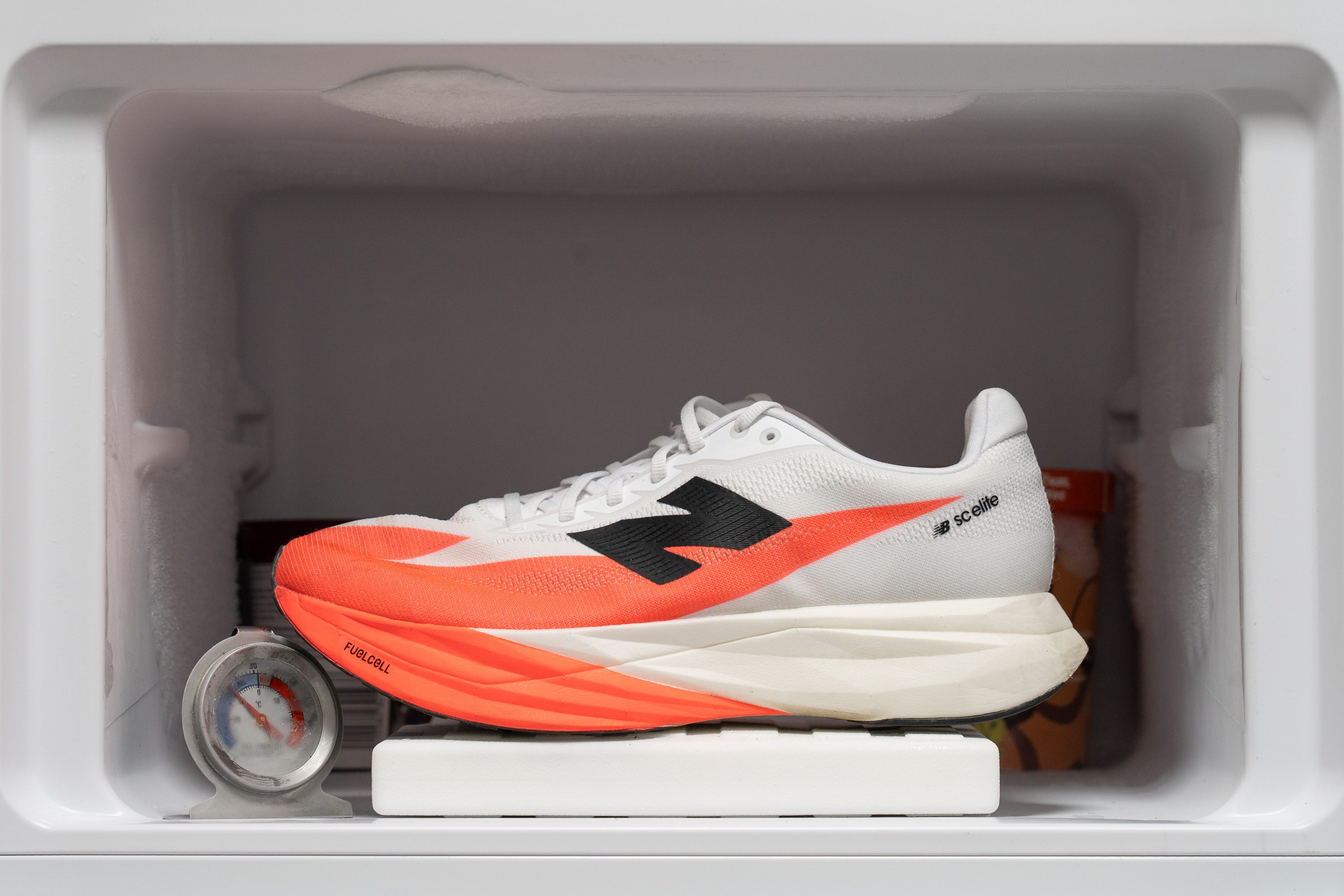
| FuelCell SuperComp Elite v5 | 9% |
| Media | 24% |
Elementos reflectantes
Como era de esperar, las Elite v5 no tienen ningún detalle reflectante, que es algo completamente normal para unas zapatillas de este tipo.
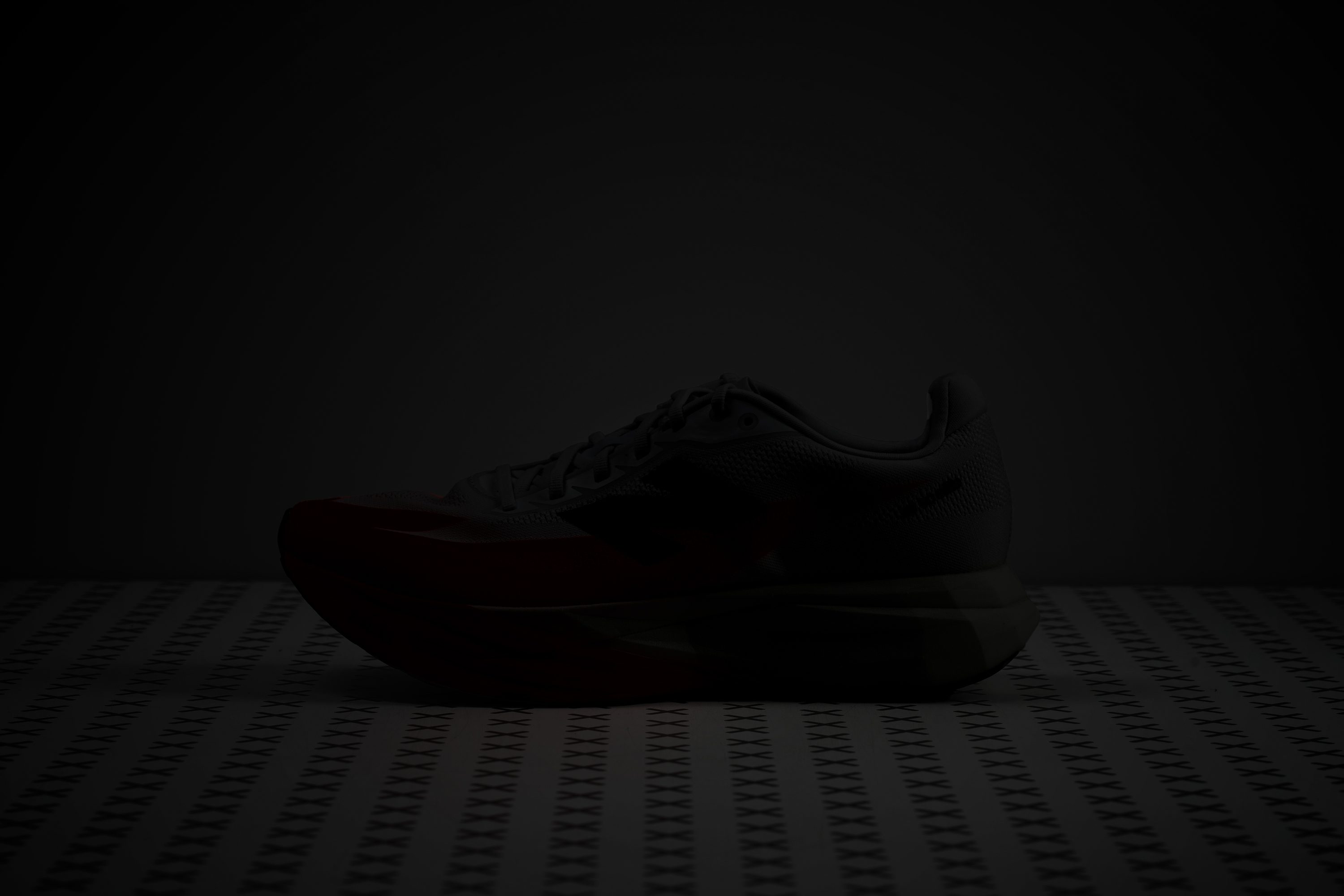
| FuelCell SuperComp Elite v5 | No |
Acolchado de la lengüeta
Algo que New Balance tenía que mejorar sí o sí es la lengüeta. Junto con el talón, era uno de los puntos más débiles de la versión anterior, ya que era demasiado corta y escurridiza.
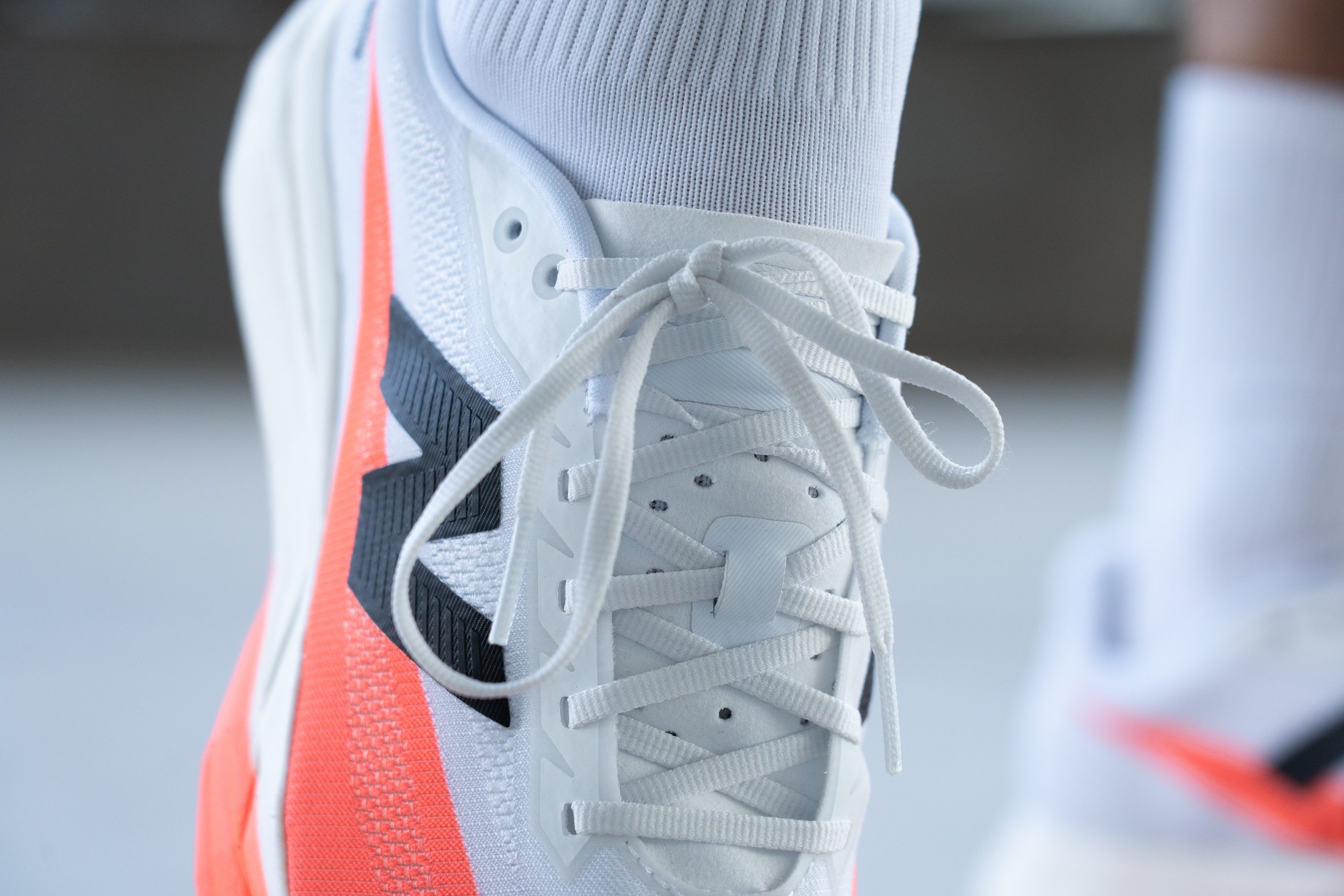
Ahora es mucho mejor. Tiene un grosor de 1,0 mm, no se mueve del sitio y es un poco más larga, aunque en comparación con la de otros modelos sigue siendo corta. Eso sí, creemos que ya va siendo hora de que New Balance actualice los cordones, utilizando un diseño con más relieve y de mejor agarre.
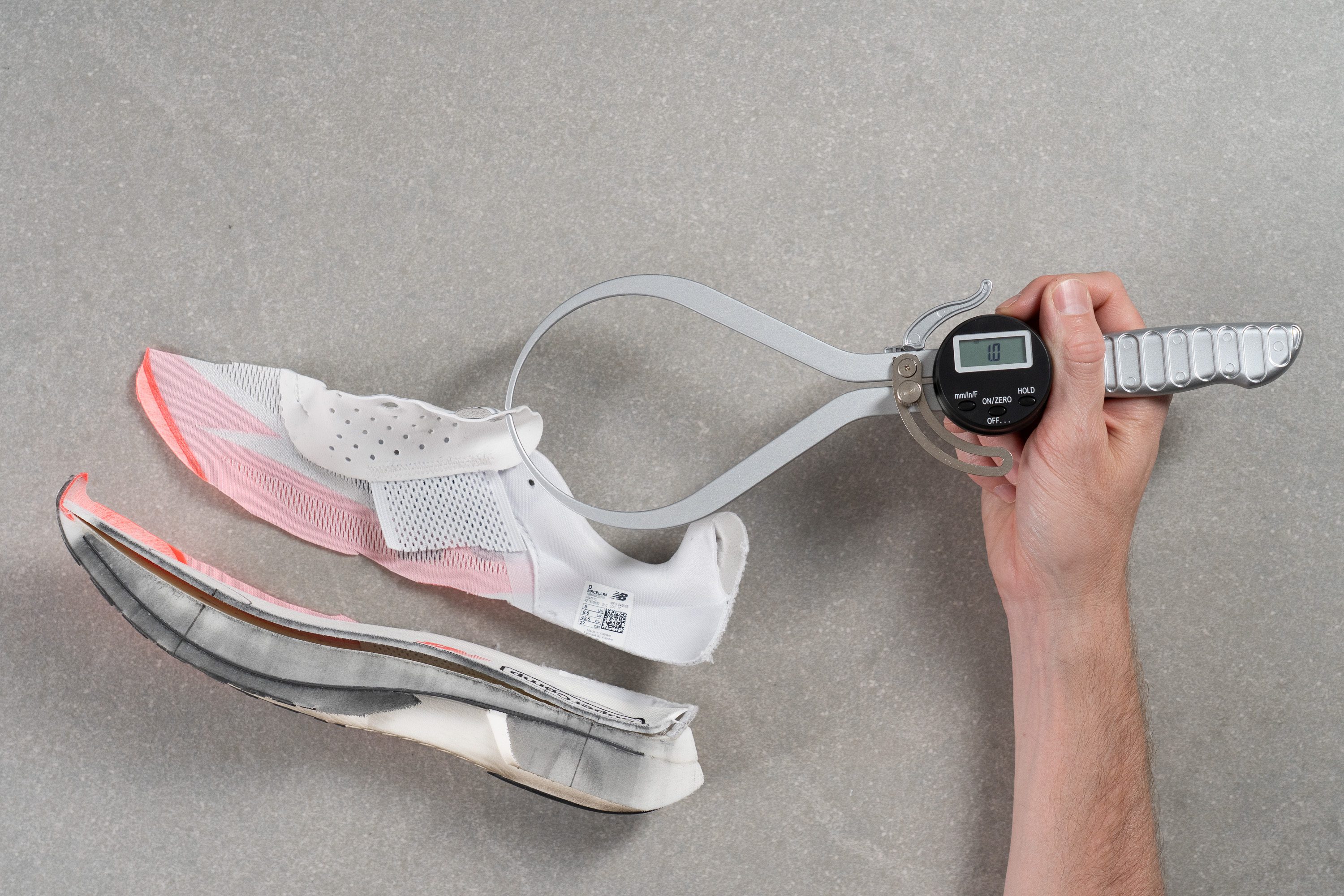
| FuelCell SuperComp Elite v5 | 1.0 mm |
| Media | 5.8 mm |
Lengüeta: tipo de refuerzo
Una de las cosas que más nos gustó de las Elite v5 es su excelente sujeción. De hecho, es una de las pocas superzapatillas que tienen una lengüeta unida a los laterales, y descubrimos que New Balance lo consiguió sin hacer que este modelo pese un quintal.
Entendemos que, al llevar los límites del diseño al máximo, es difícil incluir esta característica; pero para la mayoría de las superzapatillas, creemos que debería ser posible.
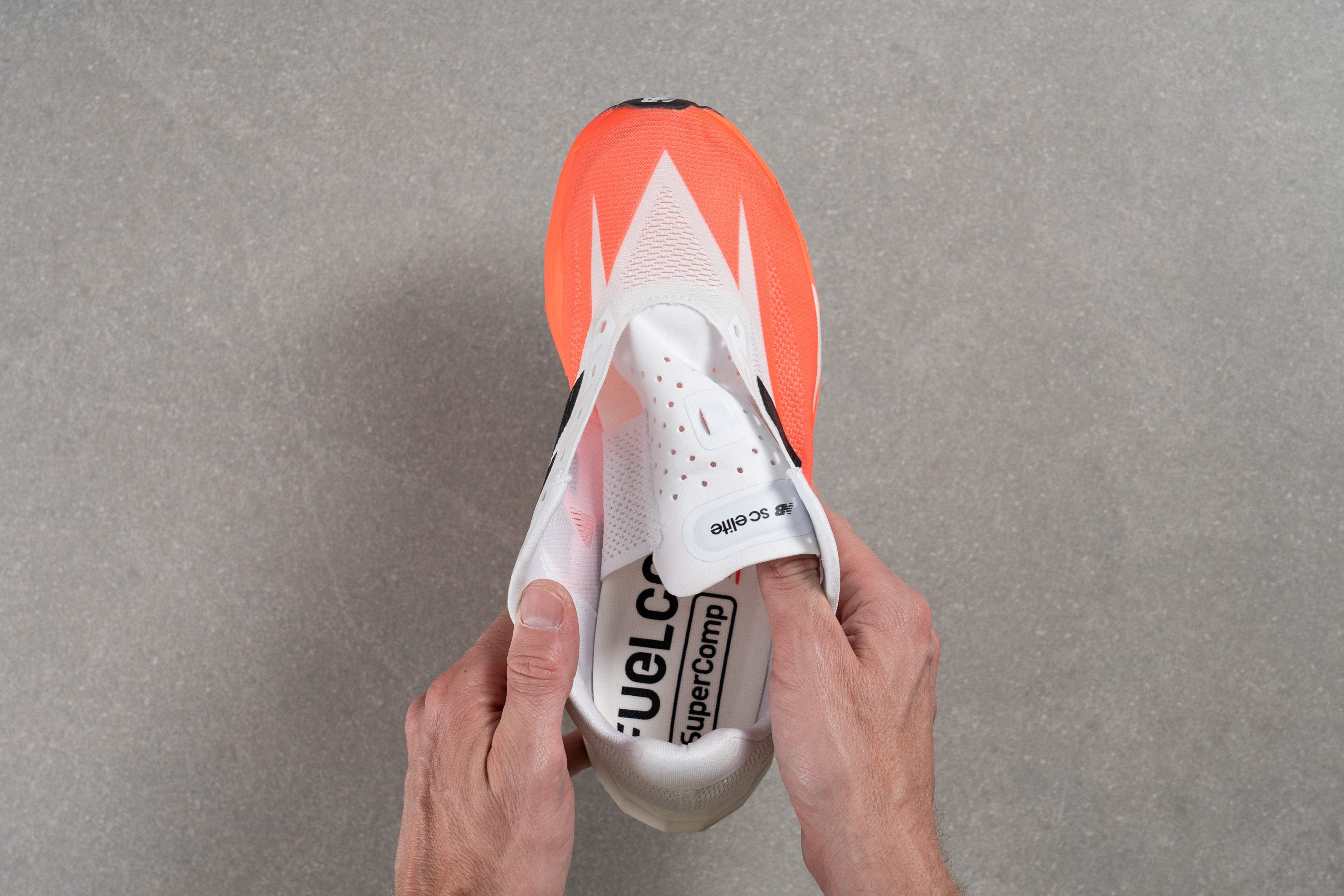
| FuelCell SuperComp Elite v5 | Ambos lados (semi) |
Precio
Creemos que las FuelCell SuperComp Elite v5 tienen un precio razonable si tenemos en cuenta su rendimiento y sus mejoras. Sí, vale, son caras, pero también lo son todos los modelos de élite con espuma de primera calidad y una placa de carbono de longitud completa.
Sin embargo, como las SC Elite nunca fueron la opción preferida de la mayoría de los runners cuando hablamos de superzapatillas, creemos que New Balance podría haber bajado un poquito el precio de este modelo. Así conseguiría llamar la atención de los compradores indecisos que suelen terminar eligiendo las opciones más populares.
| FuelCell SuperComp Elite v5 | $265 |
Tirador del talón
El diseño del talón es elegante y está mucho mejor que el de la v4. Además, no hay ni rastro de tiradores, lo que sigue reduciendo el peso. La verdad es que ahora nos parece más cómodo y sentimos que ofrece más sujeción, evitando de manera efectiva cualquier deslizamiento o roce no deseado.
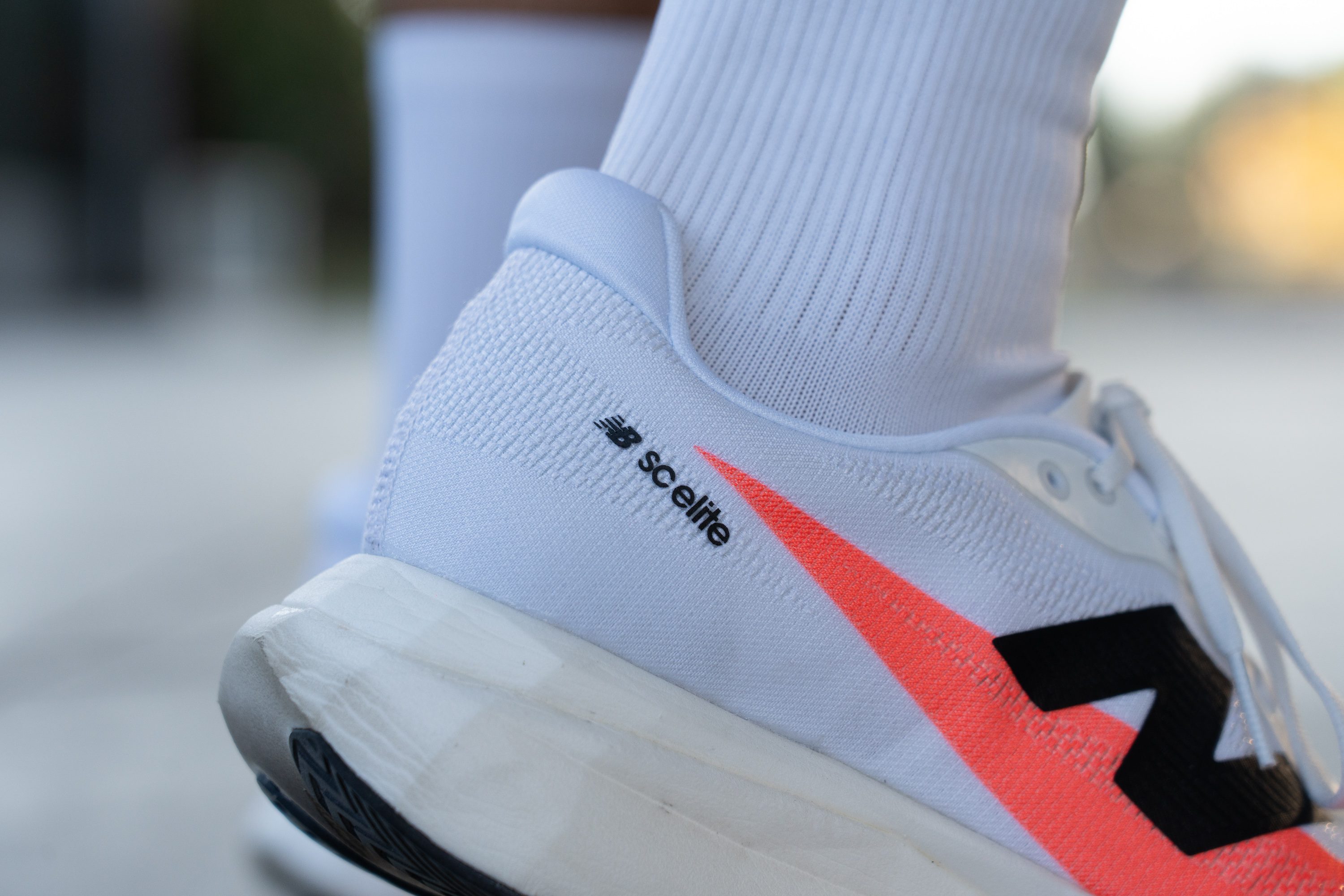
| FuelCell SuperComp Elite v5 | Ninguno |

